LEADERS FOR NOW
THE MIGHTY HEART IN ACTION
Dr Scilla Elworthy explains how we can transform the current crises using the power of the heart
CALLING ALL ASPIRING LEADERS
Jonathon Porritt outlines the four qualities we need to see in leaders who are fit for today’s challenges

LIVING IN A WILD WORLD
Lily Cole remembers John Burton, and looks at how his work can help us to change from owners to guardians
REGENERATIVE FARMING
Yeo Valley Organic’s Tim Mead says one of the most important solutions to the climate crisis is right beneath our feet
SPECIAL ISSUE
COP27
CHRISTMAS? As a gift from us to you, bag 15% off your shopping with code XMAS15 (expires 25 Dec 2022) BROWSE OR SEARCH MYGREENPOD.COM FOR EVERYTHING YOU NEED FOR A SUSTAINABLE CELEBRATION, WITH FREE SHIPPING ON ORDERS OVER £10 We’ve got you covered. Our ethical marketplace has everything from sustainable toys and natural beauty products to organic wine and eco cards and gift wrap!
DREAMING OF A GREEN
Welcome to My Green Pod Magazine!
From ‘the loss and damage COP’ to ‘the implementation COP’, COP27, the climate conference taking place 06-18 November in Egypt’s Sharm el-Sheikh, has been given various working titles.
One thing everyone seems to agree on is that time is up: we need to see strong leadership from the top and we need it now. Yet our new prime minister initially said he wasn’t going to attend and King Charles, perhaps our best climate advocate, was advised not to.
As we stare down the barrel of soaring energy prices and a cost-of-living crisis in the UK, all eyes seem firmly fixed on domestic issues and short-term solutions that will get us through the winter (with a few quick wins in the bag ahead of the next election).
In this special COP27 issue of My Green Pod Magazine, we feature the voices and thoughts of leaders across a wide range of sectors – from arts and fashion to finance, farming and energy. These pioneers are working on very real solutions that, if scaled, could set us on a path to a safe and fair future.
True leadership can sometimes be found in the most unlikely places –and every one of us can act to make a difference.


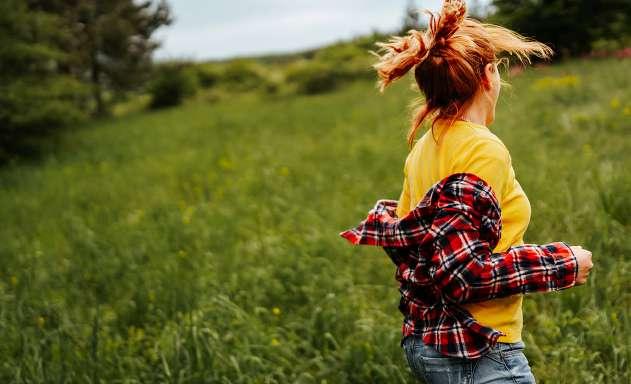
ABOUT US
My Green Pod Ltd is an independent, family-run UK business, founded by Katie Hill and Jarvis Smith. We want to share the real stories behind the brands and people working tirelessly to offer ethical alternatives to mainstream products and services. You might not see these options on the high street and they may not be the first to appear in online searches. But they are on mygreenpod.com Use the search bar to find conscious lifestyle inspiration –and you could save some cash along the way!
CONTACT US
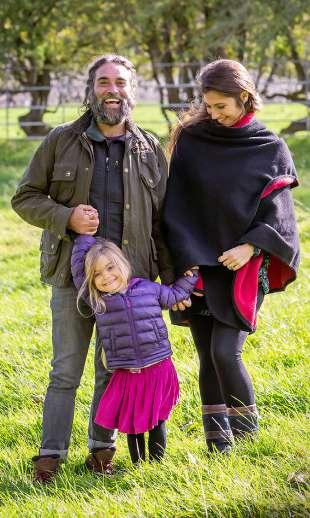
mygreenpod.com COP27 3
Katie Hill, EDITOR-IN-CHIEF katie@mygreenpod.com
PHOTOGRAPHY ISTOCK
to get each digital issue of
Magazine
straight to your inbox
f
We could add an estimated $12 trillion to the world economy if we evened up the gender gap The film and TV industry attracts the attention of more than 5.4 billion people worldwide Green spaces save the NHS more than £100 million each year in GP visits and prescriptions
Subscribe
My Green Pod
delivered
mygreenpod.com/subscribe @mygreenpod
facebook.com/mygreenpod
CLEANER THAN YOUR AVERAGE POLITICIAN
THE ETHICAL ONLINE STORE
CONTENTS
NEWS
06 Why the climate crisis can’t be solved without women in leadership 07 Dr Scilla Elworthy believes we can transform the current crises using the power of the heart 08 What have global thought leaders achieved since COP26? 09 Four qualities Jonathon Porritt wants to see in leaders fit for today’s challenges
ARTS & FASHION
10 Lily Cole remembers John Burton and the legacy he left to us all 12 Safia Minney unpicks the green growth myth 13 Model twins Brett and Scott Staniland explore why authentic leadership is often in unlikely places 14 How digital tech is being used to experience nature, express emotions and encourage learning 16 How sustainable storytelling can influence TV and film audiences
BUSINESS 18 The new way to assess and reduce the impact of our digital lifestyles 20 The programme helping people to effect change in their work, political and personal lives
MARKETPLACE 22 Shop with a conscience! Find products (and gifts) that reflect your ethics at mygreenpod.com
HOME
& GARDEN
24 Introducing the refill company with bottles too cool to throw away 25 How much could you save by switching bottled for filtered water?
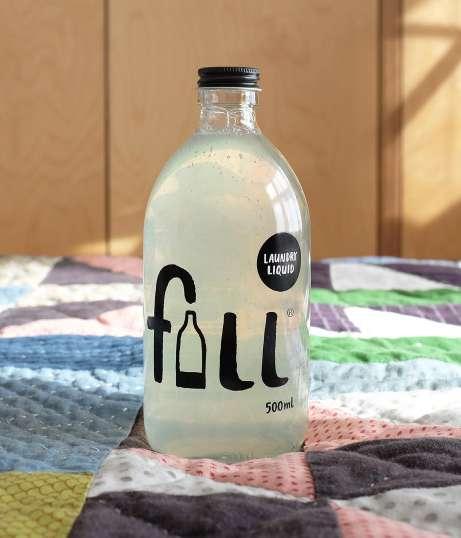
HERO
PRODUCTS

26 My Green Pod Heroes for November, plus our Top 5 Switches
FOOD & DRINK
27 Yeo Valley Organic’s Tim Mead says an answer to our climate crisis is right under our feet 28 Should we be using land for food or energy?
32 Tips from the Soil Association to help you protect our soil
MONEY
33 Why we need a holistic approach to achieving net zero
34 The aims of COP27, and the courage required to move from words to action
ENERGY
36 A new online platform helps people make their homes more energy efficient
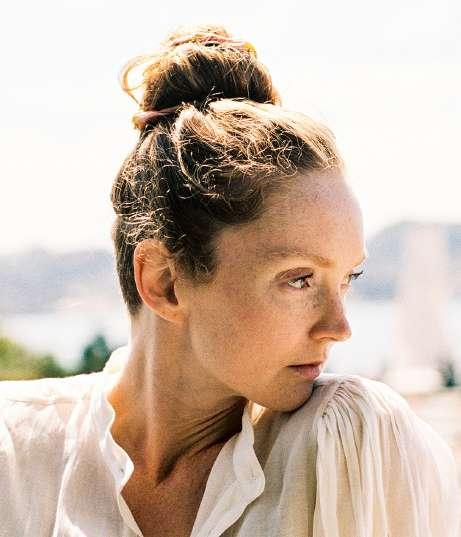
38 The runners in the race to decarbonise home heating
40 How to make our homes smarter, greener and cheaper
42 The hassle-free way to harness solar – and its savings
TRANSPORT
44 An integrated home battery system and EV charger can slash energy costs 46 Why a lack of political leadership shouldn’t spell the end of the world
COMPETITIONS 47 Take a look at the latest competition giveaways featured on mygreenpod.com!
COVER ILLUSTRATION: White Rabbit Budapest +
Prices are correct at time of going to press and are subject to change. The Publishers cannot accept any responsibility for errors or omissions. The contents of this magazine are fully protected by copyright and may not be reproduced without written permission. If you have any queries relating to the magazine call 0203 002 0990.
24 mygreenpod.com COP27 5
Distributed by My Green Pod which takes sole responsibility for its contents. MGP does not accept unsolicited contributions. Editorial opinions expressed in this magazine are not necessarily those of My Green Pod and the company does not accept responsibility for advertising content.
EDITOR-IN-CHIEF: Katie Hill DESIGN: Suzanne Taylor PUBLISHER: Jarvis Smith PUBLISHING: My Green Pod
10 16
Lehel Kovacs
Female leaders
While many of us perhaps harbour a desire to lead, the thought of it can be terrifying: 75% of people fear public speaking more than death.
It is not in our psyche to stand up, step outside our group and stand out. We fear being judged. So it came a surprise to me that I ended up co-founding SHE Changes Climate with two other women from the environmental sector.

I had previously set up Women of the Environment Group, a fairly informal network uniting women who work in the environmental sector. There were about 90 of us globally: funders, CEOs of charities and foundations and influencers. We shared news, projects, visions, hopes and despairs; I saw myself as a connector and enabler of others, but not as the person on the front line. Acting as an advisor to environmental charities suited me, as I was also raising a young family and running a regenerative farm.
When the news hit that the UK had only appointed men to its COP26 team, an outcry went through the group. How, in this day and age, could women be forgotten when it came to the people who would define the agenda, framing and narrative of the Conference of the Parties, the international climate negotiations that were set out under the guidance of the UNFCCC?
The UK was a signatory to the Gender Action Plan, which stipulates that women must be equally represented all the way to the top of these conferences. Surely this was an oversight that could be fixed with a few quiet conversations.
We set up SHE Changes Climate to demand 50:50 Vision at the top of COP. Suddenly I was in charge of building and running a campaign, leading action for gender equality and taking direct climate action.
CLIMATE & SOCIAL JUSTICE
We spoke to COP26 president Alok Sharma and Peter Hill, COP26 CEO, as well as their chief of staff,
and submitted a list of female climate experts from the UK and Commonwealth. To our surprise, no further women were appointed.
By the time COP26 came round, only two out of 12 directors were women. Due to the lack of representation of women at the top of COP, their perspectives and views would not be heard. Instead, men would be making these decisions for all of humanity, ignoring the glaring fact that experiences of climate change are not gender neutral.
CLIMATE & INEQUALITY
It surprised me how few, even in the environmental sector, understood the importance of SDG 5: achieving gender equality for climate action. With that I understood that the climate crisis was the result of our social inequalities.
Now we must remember that this was COP26; a quarter of a century had already been spent on trying to combat climate change and despite these efforts, emissions were still rising. Clearly something was not working.
WHY WE NEED WOMEN
Women are shown to raise climate ambition. Countries with more female parliamentarians have better climate policy and policy implementation. Companies with more women on their board have better climate policy and policy implementation. Women are more likely to create protected habitats. They are more likely to ratify environmental treaties.
It is estimated that we could add $12 trillion to the world economy if we evened up the gender gap. Women are the key to climate action; without them in leadership, we cannot solve the climate crisis –yet like me, many women won’t see themselves as natural leaders. For too long a patriarchal system has told them to shut up and be quiet. To fall into line.
Women are more likely to be negatively affected by economic downturns and by natural disasters. 75% of people living in poverty are women. So how can we get them to lean in, speak their thoughts and push for change? Seeing that our existing leadership is failing to tackle the emergency that has developed since COP started, we need to bring in new, diverse voices.
SHE Changes Climate is part of a wider diversity movement that seeks to bring women into leadership – of COPs and elsewhere. We seek 50:50 Vision at the top of COP.
Would you sail the world with one eye firmly patched up? Would you sail it with one arm tied behind your back? Now is the time to release the other 50% of leaders, innovators, entrepreneurs who will lead us into a sustainable future.
WOMEN DECLARES EMERGENCY
On 04 November, SHE Changes Climate held an online summit to put equality and inclusion at the centre of a vision for ambitious climate action, and released a ‘Women Declares

Emergency’ statement that builds on the 900+ signatories who have already signed its Open Letter to COP27’s Presidency and Parties. To join leaders including Christiana Figueres, Mary
Robinson, George Monbiot, Katherine Wilkinson, Dame Emma Thompson, Paul Polman and many others supporting this call to action, visit shechangesclimate.org
NEWS 6 COP27 mygreenpod.com
CLOCKWISE Verónica Inmunda, Youth, Culture and Sports coordinator at CONFENIAE; Bianca Pitt, cofounder of SHE Changes Climate
SHE Changes
Climate’s
Bianca Pitt
explains why the climate crisis can’t be solved without women in leadership
The Mighty Heart
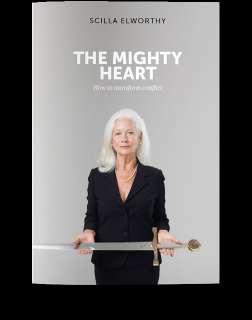
IN ACTION
Scilla Elworthy explains how we can transform the current crises using the power of the heart
Picture this: it’s 1988 – the height of the Cold War and a massive build-up of Soviet and US nuclear weapons. However, in an ancient manor house outside Oxford, top policymakers from the five nuclear weapons powers are actually meeting each other – not exactly in secret, but certainly off the record.
No press, no communiqués, just 12 men – at first rather uncomfortably – sitting in a circle. No desks, no speeches, no discussion papers – just a woman with white hair requesting that they listen carefully to what each is trying to say; not just to the words, but for a flicker of intention, of invitation, of possibility behind what is being said.
On the second morning, a distinguished diplomat from the US State Department took me aside in the beamed meeting hall on the first floor: ‘Scilla, this is a very special room.’ ‘Yes’, indeed, it was built in the 13th century.’ ‘No, it’s very special.’ ‘Well yes, indeed; Quakers have been meeting here since the 17th century.’ ‘No, no… Something else… Something seems to be coming through the floorboards…’
‘Ah yes’, I said, ‘you’re right. Under this hall there’s a small library, and five people are meditating there while we hold our discussions.’ He seemed shocked. ‘Really? What for?’ ‘Because their quiet support helps us listen to each other more attentively.’
He looked at me as if I was deranged. ‘If you find that hard to believe, ask them. They’re the elderly people who are about to serve you your lunch.’ He went downstairs shaking his head. After lunch he caught my eye with a nod, a slight salute – and the flicker of a smile.
BUILDING PEACE THROUGH TRUST
What this perceptive man detected was working. The understanding of effective communication developed during these meetings, held over 15 years in London, Beijing, Geneva and Moscow, laid the basis for eventual international nuclear agreements, and three nominations of the Oxford Research Group for the Nobel Peace Prize.
And now? This is just one example of a phenomenon developing steadily across the planet: millions of individuals and thousands of organisations who are using state-of-the-art systems to build understanding and trust to prevent violence.
For example, Peace Direct was set up 20 years ago to identify accountable, effective peace-building initiatives across the world; through them you can now access 2,000 organisations
in 44 regions of conflict around the world, all of which are stopping armed violence and killing.
THE POWER OF THE HEART
With my colleagues at the Business Plan for Peace we realised that humanity is now facing more and more crises that require us to utilise every possible capacity of ourselves – the ability to collaborate, to communicate, to face fear with courage –and that this will particularly require the power of the heart.
Before the pandemic struck, I had a premonition that some huge challenge was coming that would require humanity to deal with loss, grief and hugely increased stress. So I sat down and wrote what became a short booklet entitled The Mighty Heart, which quickly produced an online course with 10 modules.
So far, this course has enabled the world’s second-largest retail company to enable people in its teams to use unexpected responses to daily challenges.
For example, when driven mad by a family member, instead of blurting out a stream of accumulated fury, they manage to listen deeply and respond empathically.
When confronted by a crisis at work, when a director is not understanding a junior member of staff, they are able to stay cool and enable communication to happen.
When their hearts broke over families torn apart in the chaos of Afghanistan, they planned together for actions they could take; they then knew what to do, and did it.
When a colleague wanted to stand up for something she passionately believed in, but the ground just gave way beneath her feet leaving her red-faced and lost for words, she was supported to ground herself and speak calmly, with authority.
We look forward to working with you, whether in your company or on one of our courses, where you will be helping develop the kind of future there could be.
Find out more n Discover how to grow the power of your heart and turn fear and anger into compassionate action at mightyheart.co.uk
NEWS
mygreenpod.com COP27 7
Dr
‘Although attempting to bring about world peace through the internal transformation of individuals is difficult, it is the only way.’ H.H. DALAI LAMA
THE FUTURE WE CHOOSE
It’s almost 12 months since COP26, when the world’s leaders gathered in Glasgow and pledged to limit global warming to 1.5°C. But what climate action has been taken since then?
In September the World Meteorological Organization (WMO) issued a report warning that without greater action, the impacts of climate change will be ‘increasingly devastating’. Commenting on the report, UN secretary-general António Guterres said we are approaching ‘unchartered territories of destruction’. This against the backdrop of a turbulent 10 months of geopolitical events, a cost of living and global energy crisis and a change in UK government leadership, which has stoked the debate around fracking and drilling for gas and oil in the North Sea.
As we mark 10 years of TEDxGlasgow, we’re sharpening our focus on climate action. Our local, self-organised events are part of the not-for-profit global TEDx talks and the mission to ‘spread ideas worth doing’.
By engaging learners and sparking ideas globally, we have made an £11.5m social and economic impact in Glasgow. Significantly, we have engaged people in learning, with 17.1m in talk views, while training 1410 volunteers, making a great impact in Scotland and the UK.
We recognised it was time to put climate action centre stage at TEDxGlasgow when António Guterres stated 2021 was a ‘make or break’ year.
COMMITMENTS FROM THOUGHT LEADERS
During COP26, our mission was to interview a diverse range of global thought leaders. We asked them what they learned and what they are going to deliver on – not by 2030, but within the next 12 months.
Sharan Burrow, CEO of the International Trade Union Confederation (ITUC) and vice-chair of The B Team, highlighted that the time is now to make plans for climate-friendly jobs with a just transition. The ITUC said it would be fighting for people in communities in a race against time to protect the planet.
Elim Sritaba, chief sustainability officer of Asia Pulp and Paper (APP), explained how APP is innovating in economic and environmental
protection, why collaboration is essential and how APP overcame a key challenge for businesses through stakeholder engagement.
PwC global chairman Bob Moritz commented on a change to renewable energies, managing travel, behaviour change at government level, the global population and reporting metrics to judge progress.
Jens-Peter Saul of Ramboll Group offered a systematic evaluation of where clients in the construction industry can do better. A transition to hydrogen and 40 projects are underway; over time, Ramboll aims to halve the CO2 generated by its employees and how things are designed.
Jesper Brodin, CEO of IKEA, said renewable energy investments, circular solutions and customer engagement are all parts of the solution. Everyone needs to be involved – through transport, raw materials, products, retail and lifestyles.
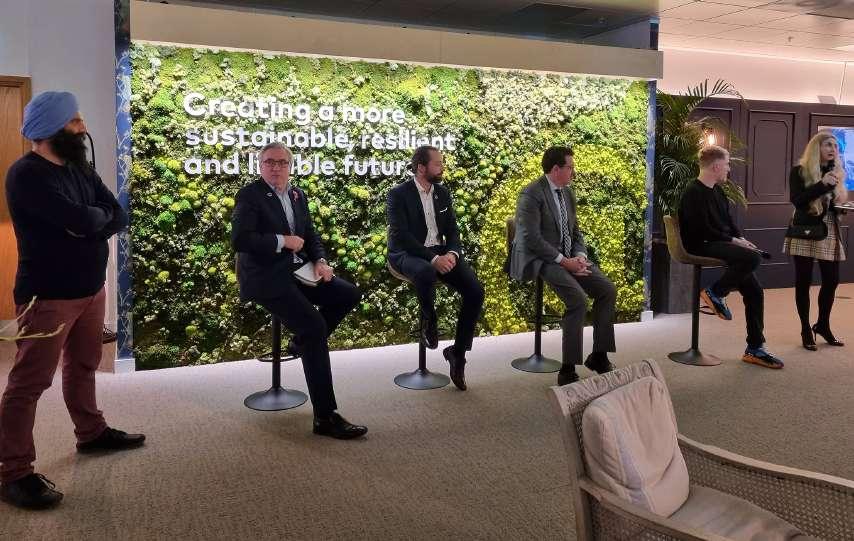
SHARING IDEAS FOR THE FUTURE
Inspired by COP26, we successfully implemented our ‘Make or Break’ Climate Action Initiative (CAI) to foster collaboration, and several exciting joint ventures were born as a result.
TEDxGlasgow’s CAI enabled Asia Pulp and Paper and Glasgow Caledonian University (GCU) to collaborate on GCU’s first Climate Justice
Programme Advisory Group, which feeds into the Masters in Climate Justice and supports the development of employment and career opportunities in climate justice.
Our new theme, ‘The Future We Choose’, will explore this in detail and continue to foster collaborations to accelerate climate action. It will spotlight actions worth doing to meet the needs of the most vulnerable while supporting the United Nations Sustainable Development Goals (SDGs) for an inclusive, climate-resilient transformational plan across health, wellbeing, energy, food, industry and society.
A CALL TO ACTION
‘The Future We Choose’ is our response to climate change and a call to action to government and leaders of public and private organisations to work with us on shared ideas for securing our future. We are determined to effect more change that is both significant and authentic, and we can only achieve that by working together.
Find out more n Explore ideas showcased at TEDxGlasgow at tedxglasgow.com
NEWS
8 COP27 mygreenpod.com
TEDxGlasgow curator Gurjit Singh Lalli looks at what global thought leaders have achieved since COP26
Gurjit Singh Lalli (left) with a gathering of global leaders at COP26
It has never been clearer what any aspiring ‘Leader for Now’ should be offering. At a time of unprecedented jeopardy for the whole of humankind – with a global recession looming, with the threat of nuclear warfare back in the headlines, with the climate emergency intensifying by the month and with hundreds of millions of people sliding further into hunger and poverty – we should be looking out for just four fundamental features in all our leaders.
1DEFENDING DEMOCRACY
As many predicted, the dinosaur of our extractive, growth-at-all-costs economy is not lightly giving up the fight, thrashing and gouging all the way to its inevitable death.
All too often, democracy itself becomes a victim of those death throes, with autocrats and populists promising that they alone have the solutions in such perilous times. And that democracy has failed.
This battle is being joined most fiercely in the USA. Whatever else you may feel about Joe Biden, pretty much everything he does is done in the name of shoring up America’s endangered democracy. And that is so important given that the Republican Party has given up any pretence of seeking democratic support to win power. 40% of US citizens now believe that civil war is highly likely – or even inevitable.
Today’s autocrats and populists survive through webs of corruption and ruthless repression, exacerbating poverty and injustice as they go. But without democracy, there will be no long-term solution to the world’s woes.
2
STANDING UP FOR THE YOUTH OF TODAY
Most politicians today (even those serving in more or less functioning democracies) have a foot in two camps: one in yesterday’s world of fossil fuels, extractive industries, intensive farming, Big Pharma and so on – simultaneously ramping up consumerism at every turn – and the other in tomorrow’s world of renewables, massive reductions in material throughput, healthy, nutritious food for all – and an emphasis on community, wellbeing and quality of life.
‘Covering your bets’ may make sense politically, but it only works by stealing young people’s futures. Leaders for Now have to position themselves unambiguously in tomorrow’s world, freeing themselves of any continuing dependency on today’s incumbent, planet-trashing industries. This is now binary: leaders either get this or they don’t.
3 PREPARING FOR A WORLD BEYOND GROWTH
The debate about the physical impossibility of achieving exponential economic growth on a finite planet was far more engaged 50 years ago than it is today. As the dinosaur of today’s economy thrashes around, leaders are still persuaded that the only way they can ensure electoral success is to promise yet more economic growth – as measured by year-on-year increases in GDP.
Received wisdom has it that no politician will succeed on any other basis; that without growth there is no progress. Without growth, societies would implode.
The onset of the Covid pandemic tells us something different. Though there were a few countries back in (pre-vaccine) 2020 which opted to keep their economies open (particularly the USA under Trump and Brazil under Bolsonaro), most countries went in for an unprecedented, planned shut-down of huge swathes of their economy – with the priority on saving lives by ‘flattening the curve’ of infections and deaths.
The imperative of economic growth at all costs was set aside; the full power of the state was deployed to furlough workers,
LEADERS FOR NOW
People all over Pakistan, including those in the metropolitan city of Mingora, saw the immediacy of the climate emergency when floods hit in August 2022
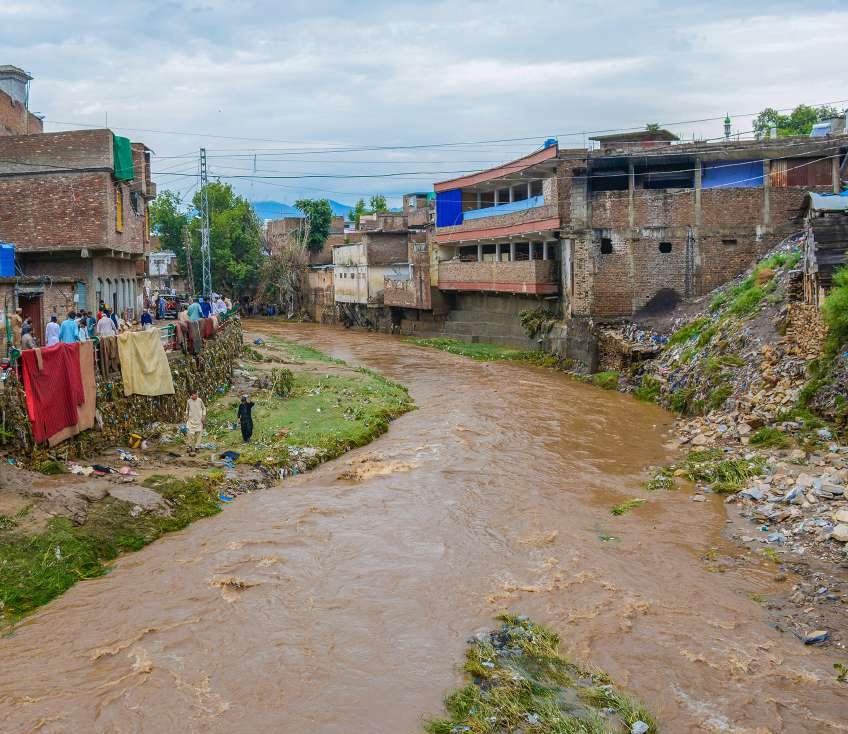
prop up businesses and deploy the government’s sovereign power by creating as much money as was needed out of thin air.
The truth of it is that the majority of people don’t yet see the climate emergency in the same way as we saw that public health crisis. The people of Pakistan certainly do, ravaged as their country has been by unprecedented floods that have displaced more than 30 million people.
4 COMPASSION AND SOLIDARITY
When António Guterres, secretary-general of the United Nations, was in Pakistan, he obviously wanted people in the rich world to give as generously as they could. But he couldn’t have been clearer when he said: ‘This is not a matter of generosity; it is a matter of justice.’
Guterres was talking here about the concept of ‘loss and damage’: those nations whose historical, cumulative emissions have contributed most to today’s worsening climate crisis must now recognise their liability, and be prepared to support those nations that have contributed least to the crisis but are suffering the most. They desperately need those ‘reparations’ not just to deal with the massive costs of more and more frequent climate disasters, but with adapting their economies to cope with what’s yet to come.
Political leadership of this kind is a dauntingly tall order! But that’s what all ‘Leaders for Now’ must now stand up and fight for, taking inspiration perhaps from politicians like Mia Mottley in Barbados and Gabriel Boric in Chile.
It’s now crystal clear that we’re living in a very different age –one that demands completely different qualities of our leaders, in every walk of life.
Find out more n Jonathon Porritt is an author, campaigner, founder-director of Forum for the Future and former chair of the UK Sustainable Development Commission (2000-2009). Read more at jonathonporritt.com
NEWS
Jonathon Porritt outlines the four qualities we need to see in leaders who are fit for today’s challenges
mygreenpod.com COP27 9 PHOTOGRAPHY ISTOCK
WE LIVE IN A WILD WORLD
Cole, author, activist, model and entrepreneur, remembers John Burton
Iwas experiencing one of the strongest asskickings from Mother Ayahuasca (the shamanic plant medicine) I’d ever had.
I was in the north of Portugal, sitting with an Indigenous tribe who had travelled from the Amazon to share their medicine, their songs and their wisdom. The music was swelling from outside the yurt, and I was on my hands and knees –unable to stand up – needing to touch the Earth. I was recovering from the seismic realisation that I needed to sell my London flat (which I love but no longer live in) and give the money to the land.
The relief of letting go followed on from a long inner battle with my financial fears, my desire for security, my emotional connection to home and general deep-rooted possessiveness.

FROM OWNERS TO GUARDIANS
Aya has this amazing ability to make you see your truth, like a mirror to the soul. Aya was calling me to embody my love of the Earth more deeply. How could I use more of my privilege to help the Earth in this critical moment? And how might we model more Indigenous versions of land management, more as guardians than as owners?
In the tenderness of this raw and honest moment, grasping at mental possibilities for a pathway through from this realisation, one person came to mind: John Burton. I scribbled his name on the back of my hand when I eventually made it back into the yurt, and made a point of calling him the following week.
DEFINING OPTIMISM
I had first met John in 2010, while supporting an initiative for elephants by the World Land Trust, the organisation he co-founded. The concept was simple: buy small plots of land in India that fall in the elephant’s migration paths as a way to connect up larger reservations. The goal was to multiply the roaming space for elephants – as well as tigers and all the smaller animals that follow in their path –and reduce the human-animal conflict in those natural corridors. The project was a great example of the wider work conducted by the World Land Trust, which buys biodiverse land around the world and protects it by vesting ownership in local communities.
THE SECRET OPTIMIST
‘Hello!’ John said cheerfully when I called, as was his way. Despite his age he always retained a childlike glee in his voice and eyes, lit by relentless enthusiasm and cheeky anarchism. Laced with humour, his cynical ‘realism’ was sometimes confused with pessimism, but I always believed him to be a secret optimist.
‘Not going to COP (out) 26’, he wrote to me last year; ‘This weekend, we (some of the original gang) are ‘celebrating’ the 50th anniversary of Friends of the Earth. We were all relatively young and enthusiastic, 50 years ago, saying the things that are still being said. But nothing has really changed, except for the worse. Much worse. But we have to keep trying.’
We discovered through our conversation on optimism that we have different interpretations of the word: for me, optimism is not giving up. John was looking at baselines, and ‘realistic’ about the fact we will unlikely recover the levels of biodiversity of the past.
‘We should look at the number of moths around a street lamp, and compare that with the numbers that were there in the 1940s’, John wrote. ‘I really do think it is absolutely essential that we do not take the state of the world’s wildlife in the 1960s, or any time further forward in time, as a baseline.’
SEARCHING FOR A SILVER BULLET
Under John’s leadership and vision through the World Land Trust and other organisations he stewarded, nearly 1 million hectares of biodiverse land have been preserved. Protecting land against deforestation is one of the best ways of maintaining carbon sinks, and also preserves rare space for billions of wild animals, insects and plants to simply live in.
Over the following months John proceeded to try and guide me through the possibilities of the alternative models of land management he had encountered in his decades-long conservationism working with local communities and Indigenous groups. If I sell my flat and want to put the money into land, how should I do it? What kind of ownership or management structure might work? I was hoping he would give me a perfect model –a silver bullet as such – but of course there was no such thing.
‘On the basis that I don’t have any answers, but may have solutions to fit certain circumstances, happy to talk’, John, typically humbly, responded. ‘This is the fundamental problem’, he elaborated; ‘everyone tries to address [environmental] issues at a big public [level], as if there is a solution, whereas the truth is that you can only solve some of the problems some of the time, if you treat cases individually. The big, grandstanding speeches, pledges etc… are doomed, by their very nature, to fail… Regrettably, nothing will do, if we only ever talk about it... I am happier trying to do something, and then defend the action if it is criticised.’
THE ELEPHANT IN THE ROOM
On John’s blog on COP26 he had concluded: ‘no one is mentioning the elephant in the room: Human populations and human greed. You cannot possibly succeed in combating CO2 emissions, pollution, climate change, without addressing the CAUSE of it all. And that is the expanding population and expanding economies, where prosperity is measured by GDP. End of story.’
Meanwhile, John had posted my daughter some of his books on homemade musical instruments and animals at risk of extinction; we started sharing stories and images of wildlife, including
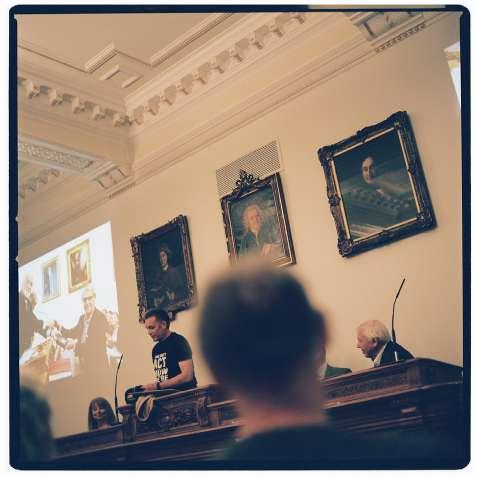
ARTS & FASHION
Lily
10 COP27 mygreenpod.com
Portuguese salamanders from where I was living. I am so happy we got this time to reconnect.
THE EDGE OF THE ABYSS
When I got the news that John had passed away, I was in Davos for the World Economic Forum, preparing for a talk at Arctic Basecamp. I cried for several hours. It is always revealing how you respond when someone passes away; the response seems to come from a bodily rather than intellectual place, and it suddenly reveals how much someone meant to you.
I think my grief operated on multiple levels. There was the personal loss of John, who had been such an inspiration and guide to me for so many years on my path. But it was also a wider, broader grief. In a world heading steadfastly towards ‘the edge of the abyss’, as UN secretary-general António Guterres puts it, the loss of someone so dedicated to protecting
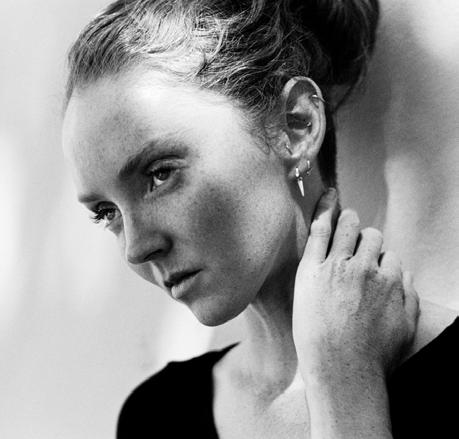
habitats for wildlife is also a loss for wildlife. I think a piece of my hope for the planet died with him.
In Davos, black cars idled and purposefully ran over pedestrians (true story) in their rush for power. Bankers, CEOs and politicians swapped notes. Helicopters hovered. Economic growth remained the religious drumbeat for the Sixth Mass Extinction.
A WILD WORLD
At John’s memorial in London in September, conservationists from around the world gathered at the Linnean Society to pay tribute to this remarkable man, who had been a mentor to so many of us. Sir David Attenborough said of John: ‘He was an extraordinary man. One I will never forget. His energy was backed with great imagination. His loss to conservation is immense. I shall never forget him, and I shall do my best to try and live up to the ideals of energy and altruism
which motivated him. He was irreplaceable and I think of him very frequently.’
Chris Packham, who once described John as ‘a very nice troublemaker’, then held up signs for different organisations he felt John would appreciate others supporting, such as The John Burton Memorial Fund and Flock Together, Whale Wide, Wild Justice and City Girl in Nature.
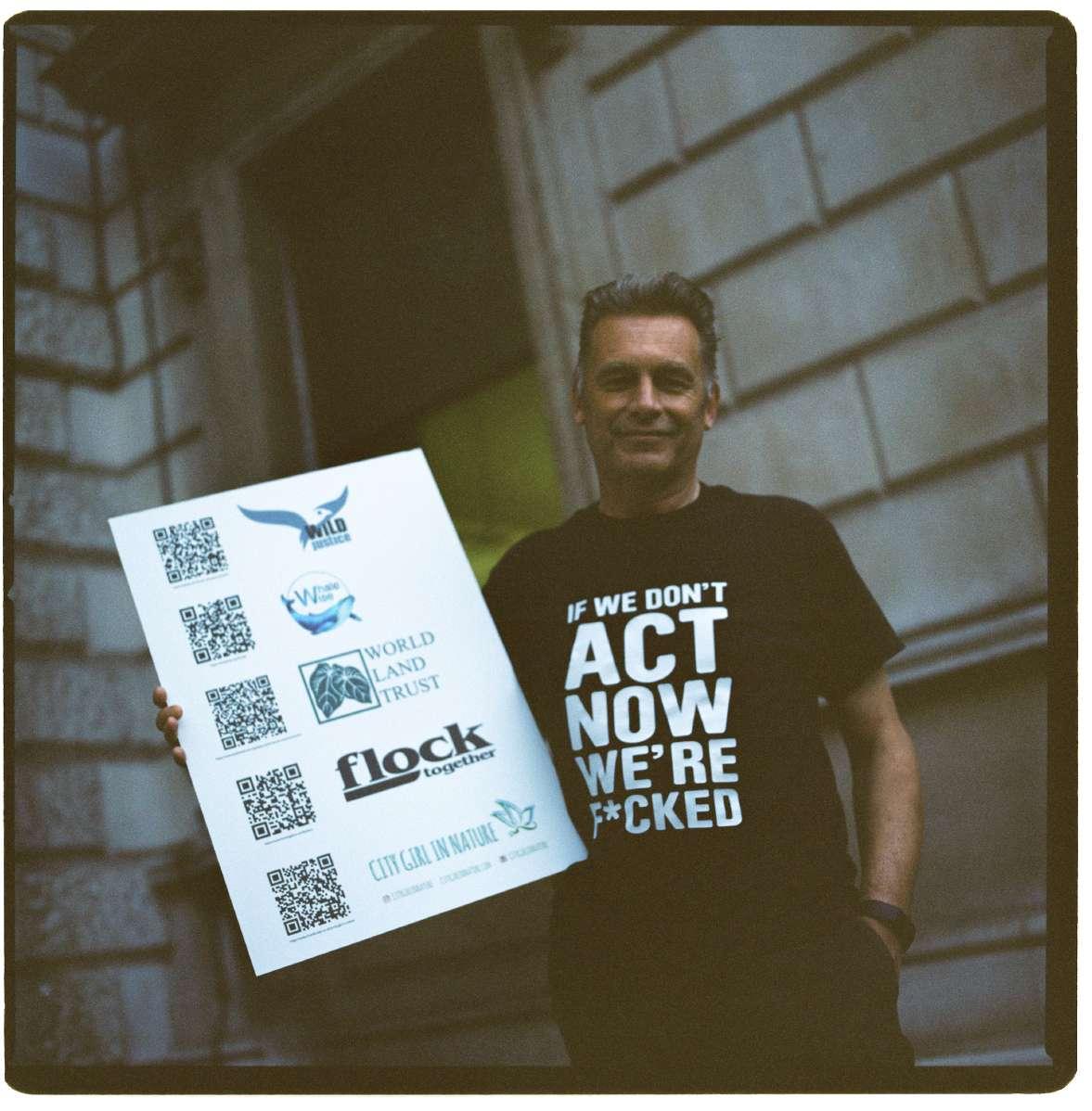
On the tube home that evening, a large yellow moth fluttered around the carriage I was in. It landed on my face. Moved by this encounter and concerned for its wellbeing in the tube, with the spirit of protecting wildlife in mind, I used my camera bag to catch it and carried it out of the train station into the cold night air, where I laid it on a tree leaf under the moon. A few days later, telling this story to John’s late wife, Viv, I learned that a new species of moth, yellow and pink in colour, had just been named after John: Tegostoma burtoni. We live in a wild world.
Find out more
n Discover the causes closest to John Burton’s heart at worldlandtrust.org/appeals/ john-burton-memorial-fund n Listen deeply and choose optimism with Lily‘s Who Cares Wins podcast at lilycole.com/podcast
mygreenpod.com COP27 11
PHOTOGRAPHY
BART KUYKENS
Chris Packham outside John Burton’s London memorial, with the board of charities whose support he felt John would have appreciated
The green growth myth
Since COP26, there’s been a lot of excitement about how Environment, Social and Governance (ESG) will save us. These standards – that are beginning to measure a company’s transparency, accountability and impact on society and the environment – are being paired with ‘green growth’ and served up as a solution to the climate crisis. There are many reasons why this approach will fail to avert ecological and social collapse.
For starters the ESG standards don’t go far enough. Administered well, they would at best represent a minimum baseline expectation of how businesses should operate.
At the same time ‘green growth’ is not green at all; extensive research supports the ‘efficiency
REGENERATIVE FASHION
paradox’ that as efficiency improves, we consume and extract materials at an ever-faster rate.
Our obsession with growth has led us to overshoot six out of nine planetary boundaries. It is dangerous and immoral to assume that unproven technology will save us; we need to redesign every industry so each sector is able to operate within the finite limits of Earth’s resources. This will mean demonstrating the benefits of degrowth.
TRANSFORMING TRADE
Whether you’re studying economics or working in business, there’s a moment of shock when you realise that the theory and thinking is out of date and doesn’t match reality – that trade and finance are stitched up in favour of the wealthy and that
Safia’s new book, Regenerative Fashion, will be available online and from all good book shops from the end of November. Part guide and part manifesto, this book shares stories of our interconnectedness with the natural world and each other. It is divided into sections on Nature & Materials, People, Livelihoods & Crafts and New Economy & Leadership.
most levers and systems point away from building a sustainable and fairer society. That’s why I built a Fair Trade company; transforming trade is key to delivering human rights, regenerative agriculture and the protection of nature.
Laws and regulations can help to create the rapid overhaul of trade and finance we so desperately need; on 14 September, the European Commission issued its legislative proposal to ban the marketing of goods made with forced labour, which is big step in the right direction.
Product passports, regulation around EPR, greenwash and product longevity and a clamp down on unpaid corporate and billionaires’ taxes could finance a just transition, and begin to correct the market in favour of sustainable production. We must also look at consumption, and build new narratives around how each of us can live in a way that creates less than two tonnes of CO2 per year.
FOSSIL FUELS IN FASHION
Responsible businesses and financial institutions must work together and lobby government to rapidly transition away from fossil fuels.
The fashion industry is heavily reliant on fossil fuels; synthetic materials account for two-thirds of all materials and the pesticides, dyes, fabric finishes, packaging, distribution and energy used to power the mills, plants and factories require fossil fuels, too.
There are low-impact ways to produce materials that have a high social impact and support regenerative farming and craft production. To help slow fashion down, we will need to buy mostly secondhand while also opting to rent and repair clothes. We must reduce what we buy new by 75% and redesign the fashion industry so it, too, operates within the planet’s boundaries.
Many leaders in the fashion industry are keen to share best practice, so earlier this year we launched a bottom-up, global movement called Fashion Declares, which now has over 700 signatories.
IT’S TIME TO ACT
Life is hanging by a thread, and Earth cannot sustain anything other than regenerative business. The rest will be choked off by laws, regulations and taxes; customers and employees will choose to walk, and finance and insurance will become expensive due to supply chain and reputational risk.
Last year our former Prince Charles – our new King – called on world powers ‘to engage in a war-like footing to tackle the climate crisis, with a military-style campaign…and to move the private sector into action on environmental issues’. Business is ready, finance is catching up and government needs to embrace new economics.
We must act take action now, by transitioning rapidly from fossil fuels, building new models of consumption and production and regenerative economies. For this to happen, we must recognise that women must be equally represented in leadership, as they are natural system-thinkers.
Find out more n Join the movement to drive global change in the fashion industry at fashion-declares.org

ARTS & FASHION
Safia Minney MBE on why business and finance need to go beyond ESG
12 COP27 mygreenpod.com
PHOTOGRAPHY
DVORA PHOTOGRAHY
Leadership and POWER
We don’t exactly live in a golden era of leadership. Look around and examples of great leaders prove somewhat elusive; where are the people we can rely on to lead the way, use their voices and show us where to go?
Good leaders will be followed into adversity, but they don’t need to be, nor perhaps should be, people in power.
When Liz Truss took the helm at No 10, her government immediately made decisions to lift the ban on fracking and allow oil giants billions in profits and bonuses, while the rest of us faced the stark reality of an energy and cost-of-living crisis. The planet simply cannot cope with this brand of leadership – and, thankfully, nor could we.
Similarly, in fashion the leaders who are genuine and authentic – whose voices can’t be purchased – are hard to find, whether we’re talking CEOs, designers, editors, journalists or influencers.

LEADERSHIP IN FASHION
We’ve had recent examples of people we may define as leaders heading into muddy waters: The Global Fashion Exchange got into bed with Boohoo Group, while the Kardashians – who many people follow – work with brands such as Dolce &
Gabbana (which may never fully recover from the racially insensitive #DGLovesChina videos it released in 2018) and Alexander Wang (who has faced a string of sexual assault allegations).
However, we do have Yvon Chouinard – the founder of Patagonia and ‘reluctant billionaire’ who recently announced he was giving up his company for the sake of saving the Earth.
Yvon liquidated his stock and will put profits –some $100m a year – into a specially designed fund tasked with combating climate change and protecting undeveloped land around the globe.
The remarkable thing about Patagonia, and the Holdfast Collective it has set up, is that there have been no tax benefits to the Chouinards, and the fund is able to lobby the government and donate to political campaigns as well as grassroots initiatives and environmentalists.
This uncommon message – that ‘this money is better out of my possession’ – coincides with the Chouinards’ belief that ‘every billionaire represents a policy failure’.
And so with these examples, we ask ourselves: who is sacrificing money for values and beliefs, who is leading and caring because they were paid to, and who can we trust?
WHO TO TRUST
King Charles’ interest in sustainability and sustainable fashion stretches over 50 years and far predates the trend-hopping activism we see from so many others. For years he has campaigned for better treatment of the planet, and sources have recently suggested he will attend COP27 – against the advice of our new prime minister.
Other leaders, whose names you may not know, are also doing the right thing and rallying small communities with great reach and change-making potential. We steadfastly believe these are the individuals to trust: no one is able to hijack their pockets, sway their decisions or pervert their morals. They may have worked in this space for a long time, with no exposure and certainly no monetary rewards.
We must seek these people out and help them to challenge the people in power. We need those who cannot be bought, those who do not shy away from challenging conversations and those who make sacrifices for the greater cause.
Find out more n Stay up to date with Brett and Scott on Instagram: @twinbret t and @twinscott
ARTS & FASHION
Model twins Brett and Scott Staniland on why authentic leadership is often found in unlikely places
mygreenpod.com COP27 13
Positively immersed

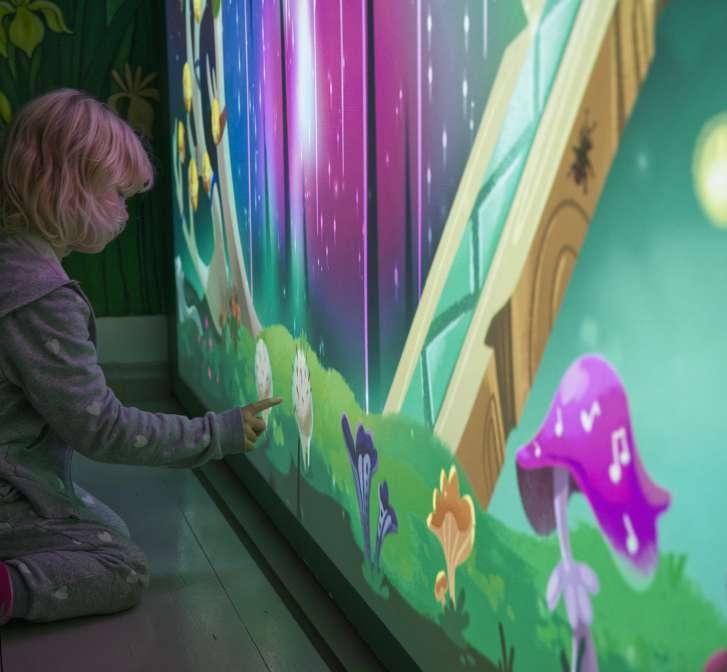
By 2050, the United Nation predicts two out of every three people are likely to be living in cities or other urban centres. Friends of the Earth has reported that in England alone, almost 10 million people live in areas with very limited access to green space, while ONS figures reveal one in eight British households has no garden. Yet green spaces support physical and emotional wellbeing, and save the NHS more than £100 million each year in GP visits and prescriptions.
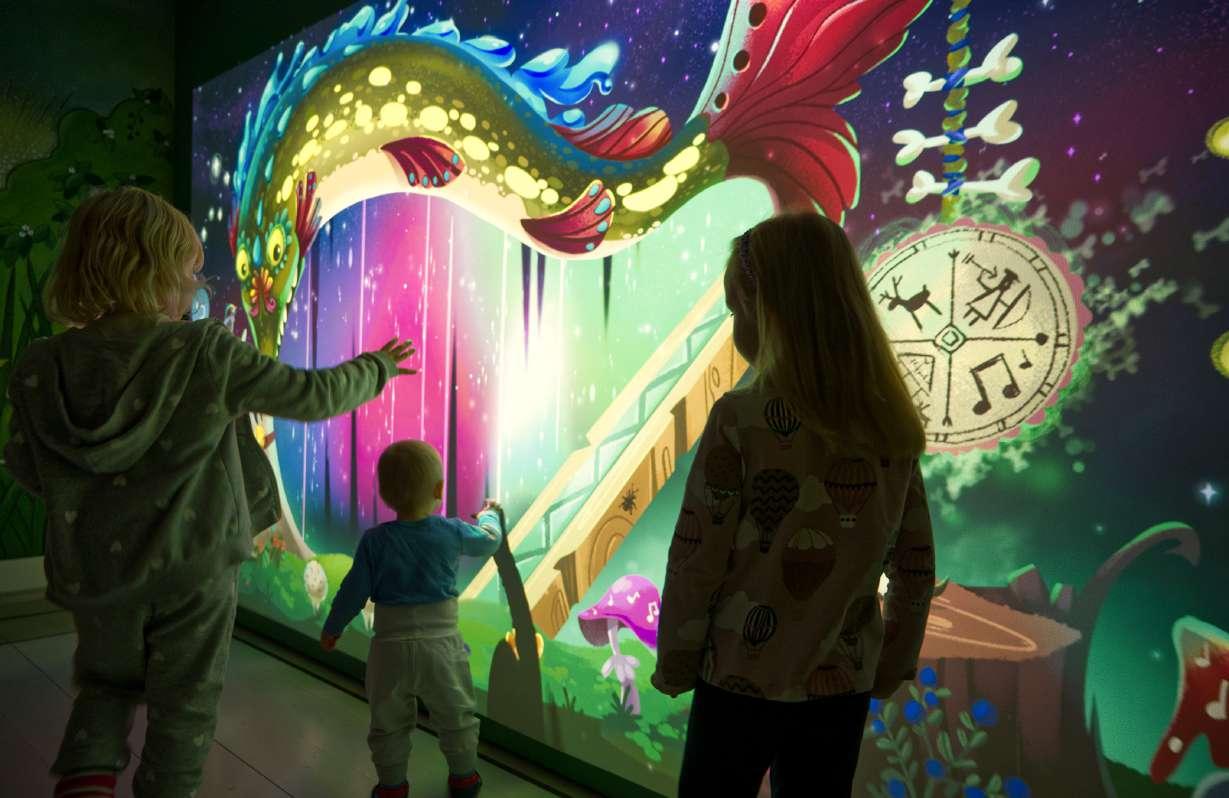
As the global population rises and the migration to urban areas continues, the race is on to find new ways to connect with nature and the many benefits it brings.
Sami Kämppi and Antti Kaukinen, co-founders of OiOi, have an innovative answer; they hit on the idea of combining digital and physical worlds at a time when a new digital field was emerging. OiOi soon became the pioneer of a digital solution to nature-starved environments that also serves as an antidote to the unfettered consumerism often found in urban areas.
‘Digital surfaces were becoming increasingly common in public spaces’, Sami tells us. ‘We thought that instead of using all the public screens for advertising, we should create meaningful content that inspires and supports the common good and explores the intersection between different natural surroundings and people: collective experiences, amusement, art, relaxation, information and knowledge. We knew that could be done in various mixed and exciting ways.’
14 COP27 mygreenpod.com
How digital technology is being used to experience nature, express emotions and encourage learning
EDITOR’S INTERVIEW
AIRPORTS AND CARE HOMES
Aukio in Helsinki Airport is a great example of how OiOi’s technology can be used to transform space in a way that brings positive results; in co-creation with interior architects and airport operator Finavia, Sami and Antti created a Finnish nature experience for travellers and airport staff.
Instead of leading travellers to the duty-free shopping area after security, Finavia wanted to bring people to a healing plaza where they would be surrounded by virtual nature. The installation has been lowering stress levels, entertaining kids and families and serving as a relaxing haven for staff ever since.
Sami acknowledges that nothing can compete with real nature; the mission is instead to use digital technology to bring nature’s healing effects into places where access to the environment is limited. Post-lockdown, this is a hot topic as businesses explore ways to get staff back into offices in a way that supports wellbeing.
Elderly care homes have also been transformed by restorative and healing content from OiOi; ‘We have witnessed touching moments when immersive experiences have evoked early memories in people suffering from memory loss’, Sami shares. ‘Bringing the elderly moments of clarity has contributed to lowering the need for medication. Further, the installations have improved the working conditions of the nurses.’
INTERACTIVE EDUCATION
As well as creating immersive experiences, OiOi can add interactive elements to installations which themselves have huge potential to support wellbeing. Education, physical exercise, rehabilitation, relaxation and stress relief in public spaces and working environments are just some of the many possible uses, alongside storytelling and communication in museums, science centres and institutions.
‘Content can be anything’, Sami explains; ‘the opportunity lies in the intersection between the immersive space and people using it. Enabling an experience that triggers curiosity and imagination is more important for us than the content itself.’
The experiential element of OiOi’s technology creates seemingly limitless possibilities – particularly for children. It can provide exciting learning environments, activate exercise, encourage self-expression and support emotional intelligence. Whatever their intended purpose, interactive installations bring people together and help to give a voice to those who might otherwise have been silent, including children with autism or other special educational needs. People are encouraged to express themselves and learn new things, and often find themselves at the centre of that educational journey.
‘We often empower our audience to be part of the content creation’, Sami explains, ’especially in learning environments. Letting the pupils develop the content is the best way for them to learn! We believe in empowering the children to actively co-create their own future.’
OPPOSITE
Satuseinä Storywall lets children ‘paint music’ on an interactive wall that encourages equality and boosts language and cognitive skills
SUPERCHARGED FAIRYTALES
For a recent project, OiOi joined forces with MusicFairyTales to create a smartwall with content that engages all the senses and uses music to teach and entertain. Satuseinä Storywall, which was piloted at the Helsinki Music Centre in Autumn 2020, is a room-sized interactive wall, on which children can experience animated stories set to classical music. When children touch the wall with their hands, they can make music with a ‘fantasy instrument’ and paint different canvases while listening to classical music. The idea is to paint what you hear; no musical skills are required and it’s impossible to play a ‘wrong’ note.
‘Classical music has been found to boost concentration and enhance linguistic and cognitive skills’, explains Teemu Laasanen, founder of MusicFairyTales. ‘Our stories are both narrated and subtitled, supporting those with reading disabilities. The wall has been found to increase equality among its users; children tend to be more social with each other, and up to 10 can play together at the same time.’
OiOi’s collaboration with MusicFairyTales kicked off with an interactive live concert. ‘We streamed the music from the concert hall, where the Mikkeli String Orchestra was playing, to an interactive wall’, Teemu explains. ‘In the nearby Chamber Music Hall, children were encouraged to ‘paint’ the music they heard with their hands and soft brushes.’
The paintings were streamed live to the concert hall, where parents could see how their children experienced and visualised the music they could hear. ‘After the concert, the visual artists – the children – came to the stage to bow and receive ovations, together with the orchestra’, Sami remembers. ‘It created an emotional moment and memory for us all.’
DIGITAL TECH FOR GOOD
Find out more n Discover the possibilities of immersive installations at oioi.fi n Learn how classical music can boost emotional intelligence at musicfairytales.fi
There’s clear educational potential in OiOi’s collaboration with MusicFairyTales, and the team is currently working on content that will help children to be more focused and creative while learning important social and emotional skills. But shouldn’t we be helping kids to move away from a world saturated with tech and digital experiences? ‘To some extent, yes’, acknowledges Teemu; ‘but digitality is a big part of our lives and will not go away. It is best to try to use tech to benefit us and our children.’ I pressed the matter: won’t the simple pleasure of reading a fairytale in a book seem boring by comparison? ‘Nothing will ever take away the pure pleasure of reading a book, or listening to someone reading a book to you’, Teemu assured me. ‘But aren’t you curious to find out how the pleasure can be enhanced?’
For now, enhancements on the tech side include touchsensitive screens made from wood instead of plastic, plus new installations for museums and science centres. ‘We want to show that content and digital technology can be created and used in a sustainable way, where we give back more than we take – both to people and the planet’, Sami tells us. ‘Every action counts.’
ARTS & FASHION mygreenpod.com COP27 15
Storytelling
SAMI KÄMPPI CO-FOUNDER OF OIOI
‘We believe that free education for all humans, with the best possible methods at hand, is the key to a sustainable future.
– the oldest form of knowledge transfer –enables us to imagine what a sustainable world would look like.’
ON-SCREEN SUSTAINABILITY
Carys Taylor, director of albert, on how sustainable storytelling can influence TV and film audiences
When the world turned its gaze to Glasgow and COP26 – still in the weakening grip of the global Covid pandemic – there was no mistaking the huge challenge that lay ahead.
A year on, at COP27 with Russia’s invasion of Ukraine, an unravelling energy crisis and global food security issues – it’s clear that global policy challenges are becoming increasingly entangled in ‘the issue of all issues’: climate change.
Global leaders of our planet have their work cut out. The scale and pace of change required to meet our vital targets requires action through bold leadership and effective policymaking, which will in turn need the support of the public. Surely the film and TV industry could be an important ally.
A GLOBAL REACH
In 2021, film and TV contributed over 120,000 tonnes of carbon to global emissions –the equivalent average emissions of around 9,500 people living in the UK for a year.
While this isn’t massive when compared with some sectors, our industry also spends $200bn a year globally on content, touching myriad supply chains ranging from construction and international shipping to cameras and cosmetics.
As a result the industry has significant purchase power – meaning there’s a huge opportunity to shift supply chains from dirty goods and services to cleaner alternatives.
Crucially, though, the industry also attracts the attention of more than 5.4bn people worldwide –
more than 70% of our global population. It’s a huge platform through which we send daily signals about the world we live in and the choices we make.
NEW NARRATIVES FOR TV
albert is the TV and film industry organisation for environmental sustainability; it provides tools and resources globally to help reduce the offscreen impacts of productions and to help those working in the sector understand how to embed climate change and sustainability into storytelling.

The industry has come a long way. In 10 years of collaboration we’ve seen the emissions created by an average hour of TV go from 9.9tCO2e to 5.7tCO2e a 42% reduction.
We also hear from production companies adopting innovative solutions – from the VOLT stack electric generators used in James Bond to Jurassic World’s reusable dinosaur moulds. The conversation has certainly moved on from simply recycling plastic bottles.
However, there’s only so far productions can go on tight budgets and timelines. For ours, and all industries, the governments of the world need to invest in the future-proofed infrastructure that will enable us to adapt.
TOO COMPLEX FOR THE PUBLIC?
We need clever policymaking to reduce the cost of green premiums and de-risk new technologies for industries like ours. This would support a virtuous feedback loop and help to build a greener economy for all – yet such bold investment would require public support.
Policymakers and television execs have something in common: they have a tendency to underestimate the sophistication and ability of the public and our audiences when it comes to understanding new information.
For years, creative content leaders have told albert ‘the public can’t engage with climate change – it’s too complex’ – but when faced with the Covid-19 pandemic, information and understanding thankfully spread faster than the virus.
Our annual Subtitles to Save the World report revealed that the word ‘Coronavirus’ was mentioned 11 times in 2019 but, perhaps unsurprisingly, more than 130,000 times in 2020.
Detailed data analysis was presented to the public and politicians answered questions on a regular basis, flanked by experts who could provide scientific background and steer us to understand
the complications in decision-making. We need the same for climate change. Until then, the film and TV industry will be doing what lifting it can.
WHEN TV MAKES AN IMPACT
Our young industry has form in shaping debate, highlighting the issues of our time and applying responsible storytelling to effect change. When the United States had a troubling trend of drink driving-related fatalities in the 1980s, TV writers inserted drink driving prevention messages into scripts of shows like Cheers – and ‘designated driver’ became a household phrase.
Blue Planet II captured the imaginations of global audiences and arguably kicked off the ‘war on plastic’ and, more recently, Love Island has ignited an interest in pre-loved fashion through its partnership with eBay.
While much of the world is reeling from the hottest year on record, extreme flooding, droughts, wildfires and energy crises, climate change can sometimes still be seen by some as an intangible, ‘not going to affect us’ issue. Our industry is in a unique position to tell stories across different regions and genres, and can help different audiences to engage with the challenges of –and solutions to – mitigating this challenge.
THE POWER OF STORYTELLING
We can learn so much from young people who are facing the effects of climate change today, native communities who have lived in harmony with their natural environment since well before the Industrial Revolution and from engineers the world over who are inventing the next technology to replace fossil fuels. But without the television and film industry, it is unlikely that these stories would ever reach our living rooms.
The more that governments of the world can support production in ‘walking the walk’, the more able they’ll be to turn their attention to what they do best: story tell.
The public – our audiences – are sophisticated. They deserve to be given the opportunity to hear the details, nuance and the complexities of science-informed decision-making, set in the context of political and economic arenas. And policymaking would be all the better for it.
Find out more n Discover more about sustainability for film and TV at wearealbert.org
16 COP27 mygreenpod.com

mygreenpod.com COP27 17 ARTS & FASHION
PHOTOGRAPHY GREEN VOLTAGE
Electric generators, like the VOLTstack used on the James Bond set, can help reduce a production’s carbon impact by 15% –and get tricky shots like the 360° IMAX pano shot, in the centre of a lake, seen in No Time to Die
Decarbonising digital
You might think that our increasingly digital world –geared around having and using less ‘stuff’ – is making a positive impact on the environment. Not so, says Eric Zie, CEO of climate-tech startup GoCodeGreen. ‘Digital access to products and services accelerates growth and demand’, he says –‘we just keep needing more stuff, faster.’
Software runs our digital lives and businesses, but we use lots of energy to build it and need hardware, data centres and networks to keep it running. Materials are required for construction and operation, energy is required to keep the background tech going and data is required to make the software useful.
‘That’s why the numbers associated with information and communications technology, the ICT sector, are so huge’, Eric explains. ’1.4 billion tonnes CO2e, or 2.5% of global emissions, in 2020 – and consuming 4% of global energy. That’s the same as all the pre-Covid air travel taken in the world in a year. Because digital is not a physical product it seems ‘invisible’, and as a result the environmental costs are hidden.’
To bring these numbers to life, Eric uses the example of Baby Shark Dance – two familiar minutes of high definition content that became the most streamed video in YouTube’s history, with 11 billion views. ‘The environmental cost? 22,688 tonnes of CO2e came from the energy used to run those streams. 1.1 million trees would be needed to sequester that amount of carbon. For something that really should never ever have existed in the first place,’ Eric says, half-jokingly, ‘that is a real and very big impact.’ That impact is from just one of the countless videos that goes viral. As Eric puts it: ‘No wonder the world is burning.’
CARBON-EFFICIENT SOFTWARE
Eric, ‘a positive agitator and a disrupter’, sees his generation as part of the cause of the climate crisis and feels a personal motivation to be part of the solution. ‘I want to use technology to do better’, he explains. ‘We live in a digital world and I love all that brings – empowerment, information, convenience and knowledge – but we believe we can help shift mindsets and culture to build more carbon-efficient software products and make a material difference to reducing the carbon cost of digital.’
Tech giants are beginning to acknowledge the sector’s giant carbon footprint and some are taking steps to reduce it – but Eric warns the approach to date doesn’t go far enough. ‘We must reject the idea that powering data centres with renewable energy sources simply makes the problem go away’, he says. ‘It doesn’t. Companies cannot achieve net zero without addressing the scope 3 emissions in their technology supply chain, which means decarbonising their digital capabilities. They have to act, and they need to start with measurement.’
Eric launched GoCodeGreen – a ‘lockdown baby’ that still operates as a completely virtual business – to help measure and reduce the environmental impact of software. The company’s philosophy is based on reduction and efficiency; it seeks intelligent and efficient ways of doing things that reduce the need to produce energy in the first place, then designs and builds carbon-efficient software that not only lowers energy use, but also extends the lifespan of the embodied carbon in devices and the infrastructure needed to run the software.
CODIFIED EMISSIONS REDUCTIONS
No company can begin to improve the efficiency of its tech and software without getting to grips with its impact. Academia is peppered with studies that attempt to do just this; analysis from The University of Cambridge revealed that the annual impact of producing and mining Bitcoin came to 22 million tonnes of CO2e; around 1 billion trees would be required to sequester that much carbon. Similarly, MIT research analysed the energy performance of Transformer, a deep machine learning model often used across neural networks for things like natural language processing, and revealed a single training cycle uses the energy equivalent to producing 203 tonnes of CO2e. Around 9,000 trees would be needed to sequester that much carbon.
‘The big challenge is that until now it has been difficult to run consistent and repeatable studies like these at scale’, Eric explains, ‘and that’s why we created GoCodeGreen. By measuring we have a foundation to inform change. By providing actions to improve energy and carbon efficiency for a software product that has been assessed we can help organisations to bring those costs down. In our first round of assessments, we have seen opportunities to reduce carbon impact by up to 56%. That can quickly add up to huge savings.’
GoCodeGreen has taken the complexity of the GHG Protocol ICT Sector Guidance and codified it so the company can assess any software product. It has already completed assessments across websites, mobile apps, full stack applications, AI and data analytics platforms and SaaS solutions. The company has assessed some really highperforming, carbon-efficient applications, and even those had further room for improvement.
The good news is that the assessments don’t take long and results-based recommendations are usually delivered within a fortnight. ‘On average we are seeing clients are able to gather the data points we need to complete our assessment with half a day’s effort for three or four key roles in their organisation’, Eric reveals. ‘The data entry into our digital assessment takes up to 45 minutes to an hour. Hit ‘submit’ and we do all the

The impact of our digital lifestyles is bigger than you might think – but now there’s a way to assess and reduce the impact
18 COP27 mygreenpod.com
EDITOR’S INTERVIEW
work, running our calculations and generating a report that details the carbon emissions, actions and baseline position for the product assessed. We deliver the report to the client after quality checking, and usually within two weeks.’
BENEFITS TO BUSINESS
Across the 30 software products it has assessed to date, GoCodeGreen has calculated its build-related recommendations have saved the equivalent of just under 20 million kWh of energy. ‘Using 2021 UK electricity pricing, we estimated this to be around £3.75m of savings’, Eric tells us, ‘so it makes complete economic and environmental sense to measure and take action if you are a digital-first business.’
In addition to cost savings, a big benefit for any organisation is the motivational value created by a contribution to the ESG agenda. ‘The feedback from engineering teams has been super positive’, Eric says; ‘they feel engaged and able to contribute. The opportunity to learn new sustainable engineering skills can also be personally rewarding.’
Decarbonising a businesses can add customer value, too; being able to show that action is being taken to reduce the carbon impact of delivering products and services can really make a business stand out at a time when people are increasingly concerned about the impacts of climate change.
SUSTAINABLE SOFTWARE DEVELOPMENT
18 months ago, awareness of sustainable software engineering techniques was almost non-existent in the mainstream – but today Eric is beginning to see real interest and a much broader sense of awareness. ‘I see eyes light up when I speak at coding events’, he shares; ‘I can feel a growing desire to know more and to take action. But the reality is that much more needs to happen – we must invest in education, measurement and action – and it needs to come from the engineering community as well as from the leaders in a company.’
The beauty of software is that there is no real physical manufacturing process, so engineers are completely free to make changes and improve code performance as and when they choose. This flexibility creates opportunities for rapid change – at any stage in the development lifecycle.
‘By measuring and baselining we provide the information to allow improvement that can happen at design stage, in build or retrospectively’, Eric explains. ‘Not all actions need to be taken at once; it’s OK to take a balanced view and run improvements over time. By going through the GoCodeGreen process you will know what you are changing, which levers to pull to drive efficiency and set targets and track performance. That allows for actionable and sustainable software development and smart, energy-aware technology choices that will underpin your digital offering.’
Improving the efficiency of data caching, reducing the size of images and removing unnecessary or frivolous features can all help to reduce the carbon footprint of a website, as well as stripping back what Eric describes as 60 years of ‘increasingly lazy’ software development. ‘A generalisation yes, but the term ‘bloatware’ exists for a reason’, he says.
WE NEED TO ACT NOW
There are few limits to digitalisation and, for Eric, there should be no limits to where change and improvements in the energy demands of software can be effected. He has set his sights on businesses in areas of the world where the impact of climate change will hit hardest first. Often these are the same areas where access to education, gender inequality and poverty are also serious problems. ‘We want to help bring sustainable
says.
The goal is for GoCodeGreen to be part of the challenge in a digital world, to help accelerate action before the window of opportunity closes and we lose the power to make a difference. ‘We have no time’, Eric says. ‘We are at a clear junction where the pathways lead to very different destinations. We need more urgency, and for big organisations to adapt and evolve their decision-making to get to the point of action faster.’
Find out more n Information about how GoCodeGreen can help measure, act and reduce a digital carbon footprint is at gocode.green
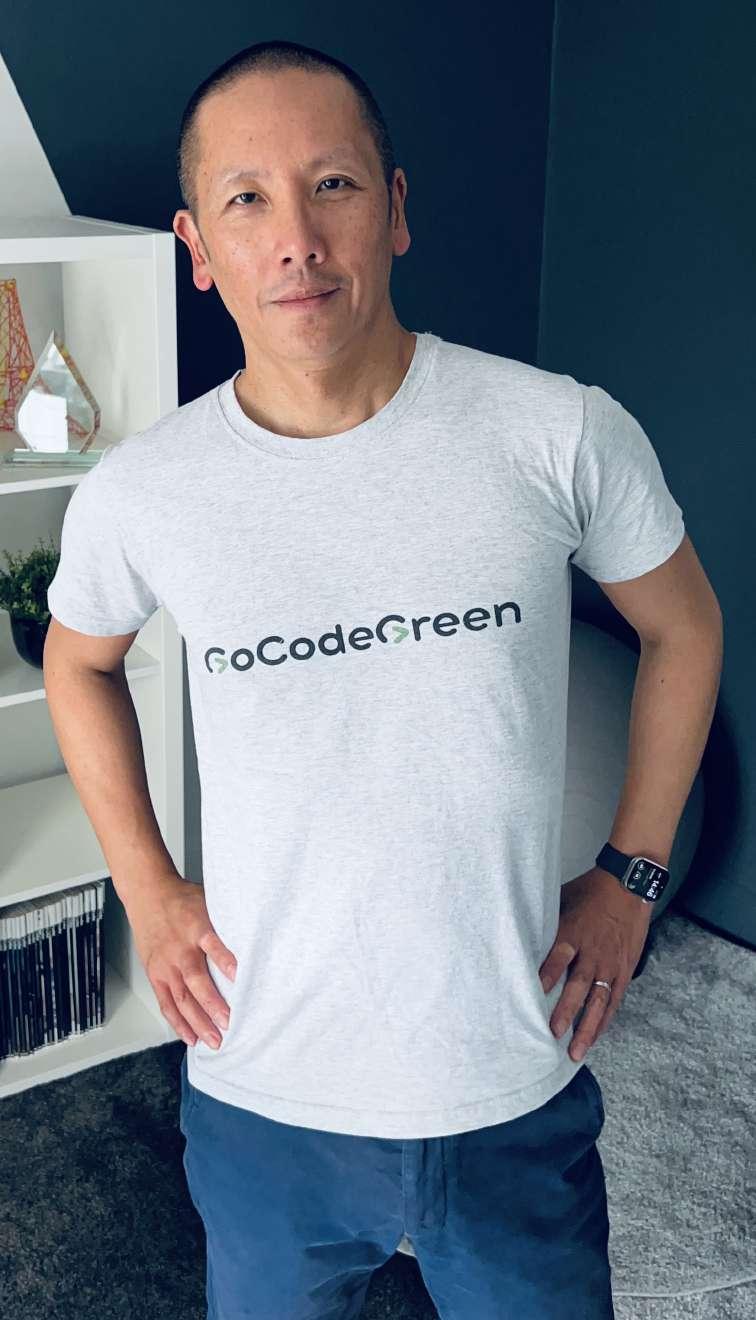
BUSINESS
software engineering to the next generation, women and girls in IT and coders in those regions and use our knowledge, experience and platform to help them where we can’, Eric
mygreenpod.com COP27 19
Eric Zie, CEO of GoCodeGreen, is on a mission to reduce the carbon cost of digital
Decarbonising digital
You might think that our increasingly digital world –geared around having and using less ‘stuff’ – is making a positive impact on the environment. Not so, says Eric Zie, CEO of climate-tech startup GoCodeGreen. ‘Digital access to products and services accelerates growth and demand’, he says –‘we just keep needing more stuff, faster.’
Software runs our digital lives and businesses, but we use lots of energy to build it and need hardware, data centres and networks to keep it running. Materials are required for construction and operation, energy is required to keep the background tech going and data is required to make the software useful.
‘That’s why the numbers associated with information and communications technology, the ICT sector, are so huge’, Eric explains. ’1.4 billion tonnes CO2e, or 2.5% of global emissions, in 2020 – and consuming 4% of global energy. That’s the same as all the pre-Covid air travel taken in the world in a year. Because digital is not a physical product it seems ‘invisible’, and as a result the environmental costs are hidden.’
To bring these numbers to life, Eric uses the example of Baby Shark Dance – two familiar minutes of high definition content that became the most streamed video in YouTube’s history, with 11 billion views. ‘The environmental cost? 22,688 tonnes of CO2e came from the energy used to run those streams. 1.1 million trees would be needed to sequester that amount of carbon. For something that really should never ever have existed in the first place,’ Eric says, half-jokingly, ‘that is a real and very big impact.’ That impact is from just one of the countless videos that goes viral. As Eric puts it: ‘No wonder the world is burning.’
CARBON-EFFICIENT SOFTWARE
Eric, ‘a positive agitator and a disrupter’, sees his generation as part of the cause of the climate crisis and feels a personal motivation to be part of the solution. ‘I want to use technology to do better’, he explains. ‘We live in a digital world and I love all that brings – empowerment, information, convenience and knowledge – but we believe we can help shift mindsets and culture to build more carbon-efficient software products and make a material difference to reducing the carbon cost of digital.’
Tech giants are beginning to acknowledge the sector’s giant carbon footprint and some are taking steps to reduce it – but Eric warns the approach to date doesn’t go far enough. ‘We must reject the idea that powering data centres with renewable energy sources simply makes the problem go away’, he says. ‘It doesn’t. Companies cannot achieve net zero without addressing the scope 3 emissions in their technology supply chain, which means decarbonising their digital capabilities. They have to act, and they need to start with measurement.’
Eric launched GoCodeGreen – a ‘lockdown baby’ that still operates as a completely virtual business – to help measure and reduce the environmental impact of software. The company’s philosophy is based on reduction and efficiency; it seeks intelligent and efficient ways of doing things that reduce the need to produce energy in the first place, then designs and builds carbon-efficient software that not only lowers energy use, but also extends the lifespan of the embodied carbon in devices and the infrastructure needed to run the software.
CODIFIED EMISSIONS REDUCTIONS
No company can begin to improve the efficiency of its tech and software without getting to grips with its impact. Academia is peppered with studies that attempt to do just this; analysis from The University of Cambridge revealed that the annual impact of producing and mining Bitcoin came to 22 million tonnes of CO2e; around 1 billion trees would be required to sequester that much carbon. Similarly, MIT research analysed the energy performance of Transformer, a deep machine learning model often used across neural networks for things like natural language processing, and revealed a single training cycle uses the energy equivalent to producing 203 tonnes of CO2e. Around 9,000 trees would be needed to sequester that much carbon.
‘The big challenge is that until now it has been difficult to run consistent and repeatable studies like these at scale’, Eric explains, ‘and that’s why we created GoCodeGreen. By measuring we have a foundation to inform change. By providing actions to improve energy and carbon efficiency for a software product that has been assessed we can help organisations to bring those costs down. In our first round of assessments, we have seen opportunities to reduce carbon impact by up to 56%. That can quickly add up to huge savings.’
GoCodeGreen has taken the complexity of the GHG Protocol ICT Sector Guidance and codified it so the company can assess any software product. It has already completed assessments across websites, mobile apps, full stack applications, AI and data analytics platforms and SaaS solutions. The company has assessed some really highperforming, carbon-efficient applications, and even those had further room for improvement.
The good news is that the assessments don’t take long and results-based recommendations are usually delivered within a fortnight. ‘On average we are seeing clients are able to gather the data points we need to complete our assessment with half a day’s effort for three or four key roles in their organisation’, Eric reveals. ‘The data entry into our digital assessment takes up to 45 minutes to an hour. Hit ‘submit’ and we do all the

The impact of our digital lifestyles is bigger than you might think – but now there’s a way to assess and reduce the impact
18 COP27 mygreenpod.com
EDITOR’S INTERVIEW
work, running our calculations and generating a report that details the carbon emissions, actions and baseline position for the product assessed. We deliver the report to the client after quality checking, and usually within two weeks.’
BENEFITS TO BUSINESS
Across the 30 software products it has assessed to date, GoCodeGreen has calculated its build-related recommendations have saved the equivalent of just under 20 million kWh of energy. ‘Using 2021 UK electricity pricing, we estimated this to be around £3.75m of savings’, Eric tells us, ‘so it makes complete economic and environmental sense to measure and take action if you are a digital-first business.’
In addition to cost savings, a big benefit for any organisation is the motivational value created by a contribution to the ESG agenda. ‘The feedback from engineering teams has been super positive’, Eric says; ‘they feel engaged and able to contribute. The opportunity to learn new sustainable engineering skills can also be personally rewarding.’
Decarbonising a businesses can add customer value, too; being able to show that action is being taken to reduce the carbon impact of delivering products and services can really make a business stand out at a time when people are increasingly concerned about the impacts of climate change.
SUSTAINABLE SOFTWARE DEVELOPMENT
18 months ago, awareness of sustainable software engineering techniques was almost non-existent in the mainstream – but today Eric is beginning to see real interest and a much broader sense of awareness. ‘I see eyes light up when I speak at coding events’, he shares; ‘I can feel a growing desire to know more and to take action. But the reality is that much more needs to happen – we must invest in education, measurement and action – and it needs to come from the engineering community as well as from the leaders in a company.’
The beauty of software is that there is no real physical manufacturing process, so engineers are completely free to make changes and improve code performance as and when they choose. This flexibility creates opportunities for rapid change – at any stage in the development lifecycle.
‘By measuring and baselining we provide the information to allow improvement that can happen at design stage, in build or retrospectively’, Eric explains. ‘Not all actions need to be taken at once; it’s OK to take a balanced view and run improvements over time. By going through the GoCodeGreen process you will know what you are changing, which levers to pull to drive efficiency and set targets and track performance. That allows for actionable and sustainable software development and smart, energy-aware technology choices that will underpin your digital offering.’
Improving the efficiency of data caching, reducing the size of images and removing unnecessary or frivolous features can all help to reduce the carbon footprint of a website, as well as stripping back what Eric describes as 60 years of ‘increasingly lazy’ software development. ‘A generalisation yes, but the term ‘bloatware’ exists for a reason’, he says.
WE NEED TO ACT NOW
There are few limits to digitalisation and, for Eric, there should be no limits to where change and improvements in the energy demands of software can be effected. He has set his sights on businesses in areas of the world where the impact of climate change will hit hardest first. Often these are the same areas where access to education, gender inequality and poverty are also serious problems. ‘We want to help bring sustainable
says.
The goal is for GoCodeGreen to be part of the challenge in a digital world, to help accelerate action before the window of opportunity closes and we lose the power to make a difference. ‘We have no time’, Eric says. ‘We are at a clear junction where the pathways lead to very different destinations. We need more urgency, and for big organisations to adapt and evolve their decision-making to get to the point of action faster.’
Find out more n Information about how GoCodeGreen can help measure, act and reduce a digital carbon footprint is at gocode.green

BUSINESS
software engineering to the next generation, women and girls in IT and coders in those regions and use our knowledge, experience and platform to help them where we can’, Eric
mygreenpod.com COP27 19
Eric Zie, CEO of GoCodeGreen, is on a mission to reduce the carbon cost of digital
EDITOR’S INTERVIEW
INNER WORK FOR OUTER CHANGE
People are at the centre of any organisation’s sustainability strategy, but they don’t always feel like it. The human element can get lost, making it hard for people to feel empowered or to demonstrate leadership that effects tangible positive change.
‘I think it is very natural that the human element has until now been missing from sustainability discourse’, says Liane Stephan, co-founder and co-managing director of the non-profit organisation Inner Green Deal. ‘Only now, when we see many new technologies and sustainability initiatives have brought no improvements, has it become clear that the human being is in the centre of all developments.’
In order to develop the technologies and behaviours we will need in the long run, Liane believes we need to change the way we think, feel and act – and this requires a level of self-reflection that isn’t easy in today’s society. ‘Our brain wants to survive in the present moment and change is exhausting’, Liane explains. ‘When we are stressed, we cannot change because we do not have the mental capacity at that moment. Since almost all organisations are stressed organisations – seeking quick solutions to mounting complex problems –it is very challenging, almost impossible to bring about systemic change.’
Change requires mental resources that many people lack in this unpredictable and fragmented, complex world. We are often tempted to look outside for the solution, and shy away from the knowledge that everything comes from us. ‘Deep down we know about the solutions that would lead to a better world’, Liane explains. ‘We also know as individuals, we should get rid of our car and consume less meat – yet we don’t.’
This cognitive dissonance – the gap between what we know and what we do – is the space where real transformation could occur.
TRANSFORMING HEARTS AND MINDS

Liane and Jeroen Janss co-founded Inner Green Deal as parents concerned about the future of the next generations, and observers unconvinced by the apparent belief among company leaders and policymakers that technological innovations will get the climate crisis under control.
‘The last ICP mentioned, for the first time, that too little attention is paid to the inner dimension of sustainability, meaning the mindset’, Liane tells us. ‘We realised that, with evidence-based and holistic approaches, we could bring about exactly that: a change in behaviour and a systemic and long-term view of the world that would result in a paradigm shift – especially among decision-makers.’
The Inner Green Deal offers evidence-based, holistic and mindfulness-based programmes for decision-makers, social entrepreneurs and facilitators. Based in Cologne and Brussels but with a growing global community, it cultivates collaboration, systems thinking and a widening sense of care; it is about transforming hearts and minds for a more sustainable world. The name was inspired by the European Union’s Green Deal; the goal of the programme is to balance the EU’s focus on outer transformation – of technology, infrastructure and policymaking – with the human transformation that Liane believes will shift mindsets and culture. ‘The Inner Green Deal means to make an inner deal with oneself, a group
or an organisation to actively create a paradigm shift towards a world of compassion, care, clarity and courage’, she summarises.
DISCOVER YOUR CALLING
The Inner Green Deal programme is run by trainers around the world; each is an expert in their respective field, but all share expertise in facilitating inner change through evidence-based as well as holistic methods.
‘All our international trainers have a long history and field experience working in corporations or for governments’, Liane tells us, ‘and all have a practise of their own that they use to stay connected to themselves.’
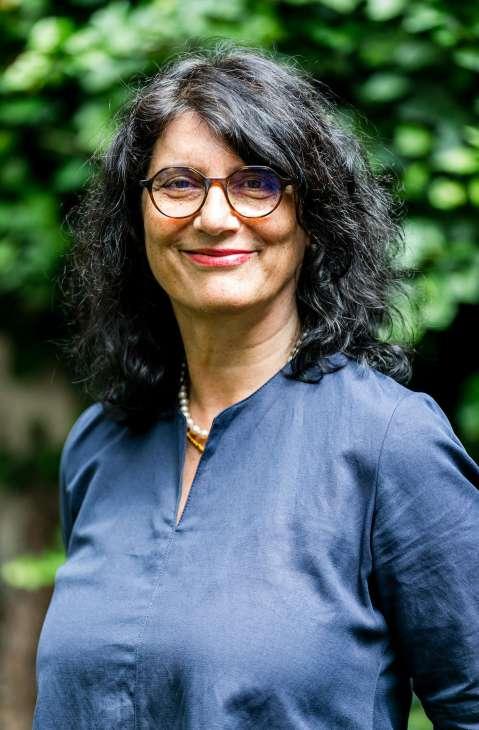
By hosting the majority of its climate leadership programmes online, the Inner Green Deal is able to bring an organisation’s managers or employees together, wherever the individuals and teams are based. There is also a programme of retreats, such as the Nature or Fellowship programmes, plus training courses for facilitators or community leaders.
‘We have everything from three-hour work shops to eight-module programmes and longer journeys – plus everything in between’, Liane reveals. ‘The five- to eight-module programmes stretch over about three months; each module is roughly two hours long and ends with an Action Lab and reflection on how to integrate learnings into attendants’ personal and professional lives.’
Each Inner Green Deal programme always includes a combination of inner and outer transformation, because both are understood to be equally important. ‘Research shows the links between higher levels of compassion for others
20 COP27 mygreenpod.com
The programme helping individuals to effect change in their work, political and personal lives
ABOVE Liane Stephan, co-founder of Inner Green Deal gGmbH, believes inner transformation is key to tackling the climate crisis
and increased pro-environmental behaviour’, Liane tells us, ‘so we seek to cultivate compassion in our programmes – but we don’t stop there. We also invite people to deeply reflect on how they can contribute, and consider how their talents and their experiences and resources could help to meet needs in the world.’
A lot of space is created to help people get a clearer understanding of their calling, as this is seen as crucial to motivating action. People are then encouraged to explore links between various themes and callings; when there are clusters of interests, people are guided through a process of collaboration in an Action Lab where they identify a sustainability problem and develop a working prototype to address it. Importantly, this Action Lab is followed by a process of deep reflection where people seek how to continue and integrate their learnings and new initiatives at work and at home.
‘Participants should be motivated to change and have an impact on their organisation and its strategic sustainability goals’, Liane concludes. ‘They do not need any previous experience; our social learning platform and the accompanying app will give participants the necessary knowledge in the field of climate change and a sustainable economy.’
INSPIRING CHANGE
The Inner Green Deal’s short- and long-term programmes have been devised to support organisations and communities that want to become more sustainable and resilient – whether they are private businesses, NGOs or government organisations. Qualifications are also offered for facilitators with specific backgrounds, who are then able to scale their impact by offering the programmes to their own communities.
‘We very often experience managers who actually want to change something but don’t know how’, Liane explains. ‘They are often tempted to look for solutions in the external world, which is normal because they are part of our performance-driven culture.’
This culture can be the very thing that holds people back; Liane notes that leaders can be so tied to their results-oriented identity that they need to be trained to distance themselves from their own thoughts and world views. ‘When leaders gain the ability to observe their own thoughts and feelings, they become empowered to see how higher consciousness can bring about change’, Liane says. ‘They begin to collaborate more and gain the confidence that they can bring about systemic change. This empowerment makes them act differently because they realise they have people around them who support their sustainable path.’
POTENTIAL FROM PARTNERSHIPS
All evidence suggests that the Inner Green Deal is an effective way to bring about tangible change; the programme’s offerings are evaluated both qualitatively and quantitatively as part of a fouryear research partnership with Lund University Centre for Sustainability Studies, and the results are impressive.
Of 100 leaders from a study of five Inner Green Deal pilot groups, 83% intended to integrate sustainability more at work over the following 12 months and 90% of the participants said they would recommend the programmes.
The Inner Green Deal is currently developing a programme for 100 leaders and policymakers from the Global South, in partnership with the Inner Development Goals and sponsored by the John Templeton Foundation. It is also partnering with UNDP and will be developing a leadership and capacity-building programme in the context of its Conscious Food System Alliance (CoFSA). ‘The EU has been a key partner for us and we were given the opportunity to pilot our first Climate Leadership programmes for leaders and policy makers at the EU’, Liane tells us. ‘Based on a very positive evaluation, we were invited to offer further programmes to EU leaders and policymakers.’
With strong partnerships in place, Liane is now looking to scale the Inner Green Deal to deliver an even greater impact. Programmes will be shared
Green Deal hinges on the understanding that everything springs from our minds: as humans we can create either a collaborative and caring, connected world or a world of exploitation and disconnectedness. Human history is one of separation; over the course of our evolution we have become disconnected from ourselves, others and the natural world, which is how we have been able to exploit our resources. The new digital world of work amplifies this mindset; we are in increasingly distant contact with nature and have less mental space to see reality as it is – namely that we are part of a greater whole.
‘By cultivating inner qualities, such as agency, compassion, awareness and courage, we can move from helplessness or frustration to a compassionate way of living that looks beyond one’s own ego’, Liane says. ‘This can unlock our collective responsibility and power to make positive changes happen. The crises can no longer be solved individually; we need collective intelligence to develop new ways to cooperate and effect change.’
JOANNA MACY
AUTHOR, ACTIVIST AND SCHOLAR OF GENERAL SYSTEMS THEORY AND DEEP ECOLOGY
with a range of outreach partners such as the UNDP, Ashoka, the Inner Development Goals, Greenhouse Group, the Mindfulness Initiative and Awaris. The Inner Green Deal is also developing a new programme to empower young leaders to support their peers and play an active role in guiding and reverse-mentoring seasoned leaders – an exciting development with huge potential.
‘Through our partners, thousands of facilitators will get access to our programmes, allowing a multiplication of our efforts’, Liane explains. ‘We will train these facilitators and offer them the digital tools to be successful in their community, in their language. All this will require significant investment, for which we are raising funds.’
FINDING CONNECTION
Liane studied contemplative methods and Buddhism for around 45 years, and the Inner
CHOOSING TO CHANGE –ON A GLOBAL SCALE
For Liane it’s clear – from science, increasingly extreme weather patterns and an ever-growing contingency of voters – that we cannot continue as we do: we have to change. ‘That we will change is a given’, she says; ‘the nature of change is not a given. Essentially we, as humans, either transform because we have learned what needs to be learned or nature, disruption, societal collapse and war will make that change for us. Marginal change will not be enough; we want to do what we can, through our programmes and activities, to facilitate positive change on a global scale.’
Find out more n Discover programmes and activities from the Inner Green Deal at innergreendeal.com
BUSINESS
mygreenpod.com COP27 21
‘The most remarkable feature of this historical moment on Earth is not that we are on the way to destroying the world — we’ve actually been on the way for quite a while. It is that we are beginning to wake up, as from a millennia-long sleep, to a whole new relationship to our world, to ourselves and to each other.’
MARKETPLACE
Our new-look Marketplace is full of alternatives to mainstream products, whether you want to clean up your diet or your skincare routine. Here are just some of the products currently available – use the search bar at mygreenpod.com to find what you need!
PLASTIC FREE
Many of the products on our Marketplace come in plastic-free packaging, or are designed to be refilled and reused again and again.
NATURAL PRODUCTS
All the products we list harness
the power of nature to get the job done – whether you’re cleaning the house or taking care of your skin.
GO ORGANIC
Organic products aren’t just better for you, they’re better for the soil, the water and
HEALTH & BEAUTY
the people who grew the ingredients. They are also more familiar to your body, making them tastier, comfier and more effective.
ETHICAL BUSINESS
Many of the companies we feature are doing great things
for nature and society behind the scenes; with your support they can do even more.
PLANT A TREE
For every transaction, we plant a tree in the tropics (with charity partner TreeSisters) as a way to say thank you.
FOOD & DRINK
TABITHA JAMES KRAAN GET STARTED
Make a full switch to luxurious organic hair care –alternatively a great gift £67

SHUI ME DE-STRESS
EPSOM BATH SALTS

Pure Epsom salts with essential oils including jasmine and bergamot £5.99
WHARFEDALE SOAPS HIMALAYAN SALT SET
Three exfoliating Himalayan salt soaps, handmade with organic, unrefined butters £15
SEED & BEAN ESPRESSO

DARK CHOCOLATE
Organic, vegan and delicious chocolate in compostable packaging £2.99


ALT. DRINKS ALCOHOLFREE SPARKLING CHARDONNAY
A fresh and aromatic nonalcoholic wine, made with organic grapes £11.99

JO WOOD ORGANICS

USIKU NATURAL WAX CANDLE
A warm and sensual fragrance with a fresh, vibrant edge –a signature scent for men and women £44

PIT-TASTIC! GIFT SET

Four miniature (10g) solid deodorants in a handembossed travel tin – free from plastic and parabens £12.50
AURA-SOMA ARCHANGELOI
A full set (x9) of Aura-Soma Archangel air conditioners, with energised essential oils to help focus your intention £226.71
DIRTEA THE BOXSET
Four pure and potent mushroom powders to add to your coffee, shake or just hot water £159.99
ATLANTIC DISTILLERY PUDDING GIN
A beautifully golden gin packed with seasonal spices and juicy vine fruits £44.99

22 COP27 mygreenpod.com
HUNTLY HERBS BEETROOT & APPLE ORGANIC CHUTNEY

A traditional combination of apples, beetroot and a little ginger for warmth £4.75

AVALLEN CALVADOS
A natural apple brandy from Normandy – perfect for mixing, as a refreshing spritz or simply for sipping £35
FOOD & DRINK
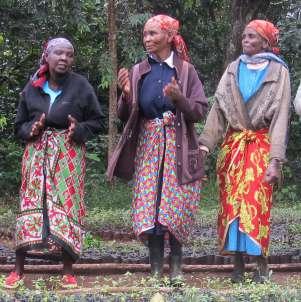
TREESISTERS TREE PLANTING SUBSCRIPTION
The gift that gives – a tree planting subscription that helps to empower women From £2 per month
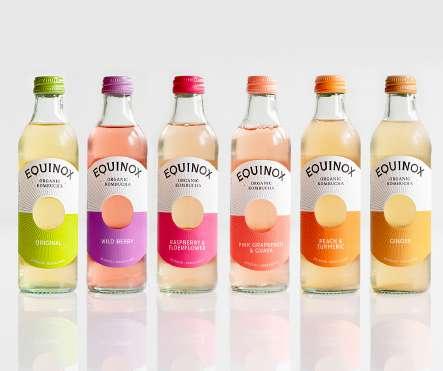

SEEDBALL BUTTERFLY MIX

Native wildflower seeds in a protective clay ball. Easy to use (just scatter and leave) and great for butterflies! £6
EQUINOX KOMBUCHA

Packs of 12 or 18 bottles of organic kombucha – two or three bottles of each of the six delicious flavours £24-34.20
HOME & GARDEN
PURO COFFEE
A generous four-month supply of delicious Fairtrade coffee – every kilo sold has protected 20m² of rainforest £80


VINTAGE ROOTS EVERYDAY ORGANIC WINE
Six bottles of organic vegan wine, made with top-quality ingredients £50
MY GREEN POD GIFT CARD



Stuck for Christmas gift ideas? Let them choose their own! Our online shop has something for everyone £10-100
ECO GREEN LIVING COMPOSTABLE WASTE BAGS
A roll of 10 60-litre waste bags, certified 100% compostable and truly biodegradable £4.99
NATURE NURTURE KIDS BEE RESCUE KIT
A great gift for kids –help a tired bee return to its hive by giving it the boost of energy it needs! £12
MAKE YOUR OWN CANDLE KITS
Make a handmade candle as a gift, or send this kit from Northumbrian Candleworks £16.99

MY GREEN POD X HUSKUP COFFEE CUP

This plastic-free reusable coffee cup is made from the humble rice husk £10
PLAYPRESS TALENT SHOW
Watch little ones pop out the pieces and slot them together for imaginative and openended play £5.99
RE-WRAPPED
Recyclable gift wrap made from unbleached and 100% recycled paper, printed using vegetable-based inks £12.95-29.95

THE SILICONE STRAW CO COLOURFUL 8 PACK
Flexible silicone straws, ideal for children and great for parties! £15
mygreenpod.com COP27 23
EDITOR’S INTERVIEW
Refillmania
be returned to the factory via Freepost, where they’ll be washed and refilled. ‘They don’t get thrown away’, Phill explains; ‘they don’t get sent for recycling. They get refilled.’

Refilling from bulk in returnable 200l drums goes against the way that most supermarkets have always chosen to supply cleaning and laundry products – or any products, in fact. ‘We’re so glad to see that this is starting to change’, Phill tells us. ‘Better still, we’ve seen that the folks who visit shops like Better Food get the idea, too – all we have to do is wheel the 200l drums into position. Each one will fill 400 500ml bottles!’
These returnable drums are perfect for closedloop supply at scale, as over time they eliminate huge volumes of single-use plastic waste. ‘We pick them up secondhand from a big soft drinks manufacturer’, Phill reveals. ‘We wash them out and stencil them by hand with environmentally friendly industrial (EFI) ink, and when they’re empty we get a message to pick them up and take them back to our factory in Northamptonshire, where we wash them, refill them and send them out on the road again.’
When Phillip Kalli joined the cleaning product business that had been set up by his dad – ‘a wonderful man and a cool dude’ – it would be fair to say he brought his own script. ‘I really wanted to create something good’, he tells us, ‘rather than delivering x% growth each year for the rest of my life.’
Before joining the company over a decade ago, Phill worked for a music magazine and went on to manage a band. ‘We signed to EMI, made a record and toured’, he says; ‘creating refillable and eco cleaning, laundry and personal care products was the logical next step, right?’
While not exactly the career path most trodden, Phill soon discovered that creating an independent business was ‘a lot like doing a band’: ‘It’s all about getting folks to believe in your ideas’, he explains.
AN ANTIDOTE TO SINGLE USE
On joining the family company, Phill was given the freedom to try to reconfigure the business around an uncompromising refill model. ‘I had the idea to make a bunch of intuitively refillable and eco-responsible home products that looked cooler than anything I could find out there’, he tells us. ‘The products would be supplied plastic free and ready to fill – with no compromises and no unnecessary waste.’
‘Intuitively refillable’ is an interesting concept, and one that goes to the heart of the business. The first bottles were printed in Shropshire, in a shed that specialised in small runs of craft beer. ‘When I held one in my hand for the first time, it felt like something good’, Phill remembers. ‘The black monochrome
helped give the bottles a purpose, a permanence and a simple kind of cool all of their own. We wanted to make refill intuitive – for everyone. The antithesis of the noisy, colourful single-use plastic that floods shelves, cupboards and sinks everywhere.’
Nothing quite like Fill existed then, even ‘eco’ brands persisted with single-use plastic – and some still do. Phill hoped that the design would encourage people to keep something they would normally throw away, without thinking twice.
REFILLS MADE EASY
Fill has gone further than most by ensuring its glass bottles are screen-printed with all the necessary product information and CLP labelling, to minimise any risks associated with refilling products into food containers or random empty vessels.
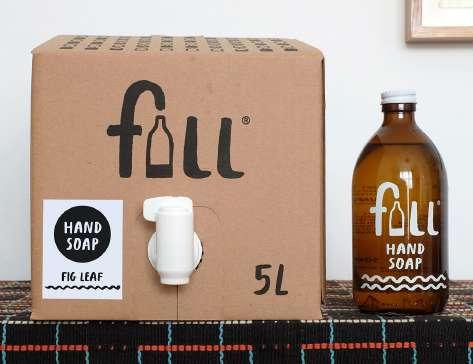
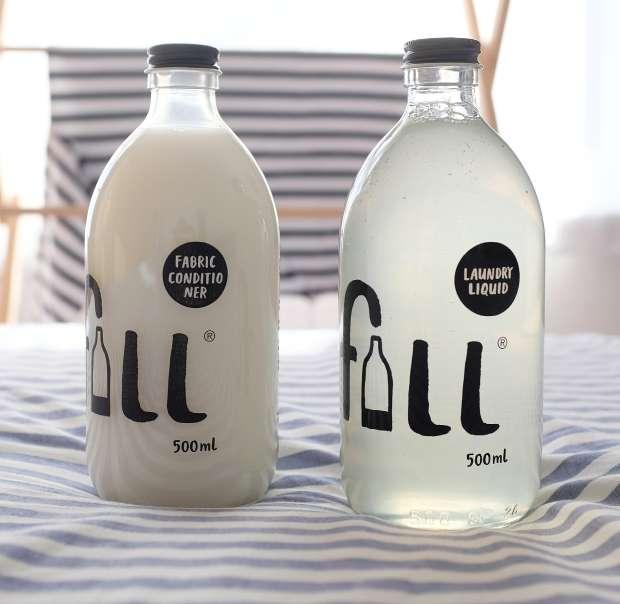
Bottles can be returned to any of Fill’s stockists for a refill, while the bag-in-box liners (5l/10l) can

CHEMISTRY AT ITS CORE
Fill’s bestsellers are Laundry Liquid, Wash Up, Hand Soap and Hair Wash; ‘they sell well because they work great, they look cool and they’re genuinely nice to use’, Phill says. Alongside the cleaning products is a Raw range – ‘a kind of toolkit, or artist’s palette’ – including everyday essentials like rose water, cleaning vinegar, citric acid and bicarbonate of soda. Customers can mix Fill with Raw products to make all kinds of solutions –from sink unblockers to oven cleaners. A set of simple guides on the Fill website offers great tips and inspiration for DIY cleaning hacks.
Phill’s dad is a PhD formulation chemist, which lends Fill formulations a credibility that Phill is keen to preserve. ‘We’ve spent a lot of time getting accreditations to demonstrate our credibility, integrity and responsibility’, Phill tells us. ‘As a team with modern, responsible chemistry at its core, we want to avoid any greenwashing.’
Phill hopes to have some kind of low-key Willy Wonka tours ready for next spring; ‘It’s not a pretty factory’, he confesses, ‘but we are doing what we say we do. Customers can see through all the bullshit nowadays. I know I can. I joke sometimes that we might be the slowest-growing refill brand in the UK, but I think there’s something good to be said for that. We aren’t setting out to be an overnight sensation – refill is not a passing fad.’
Find out more n Shop the Fill range at mygreenpod.com/vendors/fill-refill-co
24 COP27 mygreenpod.com HOME & GARDEN
The man who swapped rock ’n’ roll for rinse ’n’ return is making bottles simply too cool to throw away
Discover why Fill Refill is a My Green Pod Hero at mygreenpod.com
As living costs soar and we continue to battle plastic pollution – in everything from our food and drink to our waterways – there has never been a better time to switch bottled water for an effective filter that strips unwanted contaminants from the tap water you already pay for.
In the UK our water is becoming increasingly polluted; chemicals from industrial and domestic sources, nitrates, pesticides and herbicides from intensive agricultural activity and pharmaceuticals from recycled domestic water all end up in our water supply, and increasingly water is also being contaminated by microplastics.
While water company treatment processes strip most microplastics from the water delivered to your tap, the rise in plastic pollution – exacerbated when we buy bottled water in a bid to avert the problem – means some of these tiny pieces of plastic in our water will inevitably get through.
‘This increase in contamination has occurred relatively recently and only now are we beginning to recognise the presence of many of these materials in our drinking water’, says Stuart Morris, manufacturer of Coldstream Filters. ‘Some are known to be harmful while others are less understood, and studies are only just beginning to explore their effects. We feel that it is important to protect our long-term health and the environment from these issues, which are only just coming to light.’
FILTERS AND WASTE
Filtration isn’t new – many of us have been filtering our tap water for decades – but the technology is getting more sophisticated and today’s shoppers are more conscious of products’ materials, associated waste and lifecycles.

‘All filters are disposed of every three to six months, and many contain large quantities of plastic’, Stuart explains. ‘For the most part this plastic won’t be recycled, meaning it will contribute to the spiralling problem of plastics in the environment.’
Another issue with many water filters, such as the semi-permeable membranes used in reverse osmosis – or ‘RO’ – systems, is that they only filter half of the water that passes through them; the contaminants are collected in the wastewater, which is then put back into the sewage system and, ultimately, the environment.
PROTECTING THE ENVIRONMENT
Stuart, a qualified Mountain Leader and Yachtmaster, has always had a keen interest in the natural world. ’In my lifetime I have seen the damage we are doing to the environment’, he says. ‘As an engineer I feel I have a duty and a responsibility to do all that I can to improve the situation, and as an individual I believe every one of us can make a small change to help improve the environment. This is the only way we can preserve a healthy, habitable planet.’
Stuart started to manufacture Coldstream Filters in 2015, to give people an opportunity to buy effective undercounter or countertop water filters that have a lighter environmental impact. ‘We are trying to permanently remove contaminants from the environment’, Stuart explains. ‘Our filters are
EDITOR’S INTERVIEW
manufactured using power from on-site renewables, and we use natural materials for our filters. We have committed to removing the small amount of plastic we do use by 2025.’
The ceramic filters are made from naturally occurring diatomaceous earth, which removes micro-organisms such as bacteria and viruses. High-quality carbons, derived from coconut, are used to remove chemicals and heavy metals.
‘The filters are engineered to remove materials ‘dissolved’ in the water’, Stuart explains, ‘while the ceramic filters, which can be cleaned and reused, remove the sediment that can quickly block filters before they have reached their maximum filtration capacity.’ All Coldstream Filters are tested to the end of their life by independent labs, to ensure they filter the last litre as effectively as the first.
While helping to reduce the waste associated with mainstream water filters, Coldstream Filters can also help you to save money. ‘Our filters are rated at up to a 10,000l life and typically cost up to £35’, Stuart reveals, ‘so clean water costs less than 0.5p per litre, compared with the typical 35-40p per litre for bottled water. A family of four drinking the government-recommended two litres of water each per day will consume at least 2,920l of water per year. That would cost £1,022 if sourced from bottled water, but £10.22 if using one of our filters.’
It has never made more sense to ditch bottled water and filter what’s coming through your tap.
HOME & GARDEN mygreenpod.com COP27 25
MARKETPLACE n Browse the Coldstream Filters range at mygreenpod.com/vendos/coldstream-filters
OF THE FUTURE
FILTERS
How much could you save by switching bottled for filtered water? Find out why the Coldstream Undercounter Water Purification System is a My Green Pod Hero at mygreenpod.com
HERO PRODUCTS
Introducing our November Heroes!
We’ve picked these products because we believe they are all best in their class for people and the planet. They represent simple, sustainable switches that will help to keep you, your home and the planet healthy –without compromising on performance!

View all our Heroes at mygreenpod.com/heroes
KEEP THIS CRACKER
REUSABLE CRACKER

Ribbons made from recycled plastic; pet-friendly ecosnap® pulls without a loud bang. mygreenpod.com/product/ keep-this-cracker-six-reusablecrackers-red-jewel-design
MEATLESS DOG FOOD
100% nutritionally complete vegan dog food, formulated for growing puppies and adult dogs. mygreenpod.com/product/ mckinna-plantlabs-noochypoochy-puppy-adult

SKÄR ORGANICS BEESWAX
DINNER CANDLES
The UK’s first certified organic dinner candles, available in four different sizes. mygreenpod.com/product/skarorganics-organic-beeswax-dinnercandles-pair
Shop local – wherever you are – using the BigBarn Local Food Map. The virtual farmers’ market has been dubbed ‘the Amazon of local food’, and is helping to connect shoppers with their local suppliers.
@findlocalfood mygreenpod.com/heroes/ big-barn-local-food-map
Choose recyclable gift wrap made from 100% recycled post-consumer waste unbleached pulp, and printed with environmentally friendly vegetable-based inks.
@Rewrappeduk mygreenpod.com/heroes/ re-wrapped-wrapping-paper 3
If your skin’s suffering from the mix of central heating and cold weather, keep a tube of Weleda Skin Food with you at all times. This natural wonder balm will soothe and nourish dry, chapped skin –from fingers to toes.
@WeledaUK mygreenpod.com/heroes/ weleda-skin-food 4
Avoid food waste over Christmas (and beyond!) with organic cotton food wraps from WaxWraps.
#waxwraps mygreenpod.com/heroes/ kinetic-wax-wrap 5

NATURE NURTURE KIDS
NATURE NURTURE KIT

The ultimate nature-helping adventure rucksack for young Earth warriors. mygreenpod.com/product/ nature-nurture-kids-thenature-nurture-kit
VINTAGE ROOTS
NO ADDED SULPHUR SIX
Six certified organic red wines with no added sulphur dioxide (SO2), a common wine preservative. mygreenpod.com/product/ vintage-roots-no-added-sulphur-six
HONEST SUPPLIES
RECYCLED 3PLY TOILET PAPER
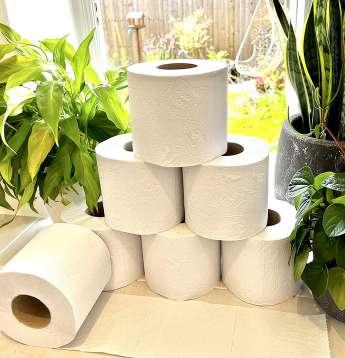
Triple-quilted and super soft, this 100% recycled loo roll is also great for sensitive skin. mygreenpod.com/product/ honest-supplies-100-recycled-3ply-toilet-paper-x24
If you’re about to buy a product you don’t really need, you can save some cash by putting it back and planting a tree instead!
@treesisters mygreenpod.com/heroes/ treesisters
TOP 5 NOVEMBER SWITCHES 1
2
26 COP27 mygreenpod.com
WHAT’S THE BIG STORY?
Yeo Valley Organic’s Tim Mead explains why one of the answers to our climate crisis could be right under our feet
Rishi Sunak. COP27. Fracking. Immigration. The cost-of-living crisis. Just Stop Oil. The Crown. Instead of focusing on a big story, I’m going to tell you a little story. It’s a simple story about regeneration.
Regeneration means putting life at the centre of every action and decision. Put simply, it’s all about creating more life.
Why regeneration? Because our planet and young people are telling us the same story. Vital connections between human beings and nature have been severed. Entire systems are broken –our weather, land, industry, energy, food and more. This disconnection is the root of our climate crisis. It’s also where we discover some of our simplest solutions, and those endeavours that could engage us all to act.
INDUSTRIAL FARMING
Addressing and reversing the climate crisis will require connection. It has often been said that the climate crisis is a not a science problem but a human problem; nature never makes mistakes –we do. And because of that, we have many selfinflicted problems to work out.
As a regenerative farmer and organic food producer I’m acutely aware that a third of our total climate impact comes from our food and agricultural systems, as does a majority of human disease. It’s clear our farming system has lost its way.
Over the last 60 years, food production has become increasingly intensive and industrial. While this has allowed us to grow ever-greater quantities of food, it has also led to farming
practices that have degraded soils, reduced biodiversity and contributed to climate change.
Over a third of arable land in England and Wales is seriously degraded. As well as leading to a major loss of carbon to the atmosphere, this reduces the resilience of soils in the face of extreme weather linked to climate change.
FARMING AND FOSSIL FUELS
Industrial agriculture is largely dependent on fossil fuels for the chemical fertilisers that supply nutrients to grow crops.
Dependence on oil has significant implications for global food security either through overall supply limitations or the weaponisation of fossil fuels, as experienced recently in the Ukraine war.
WORKING WITH NATURE
While industrial farming feeds the plants and soils with chemicals, regenerative farming feeds the soil and its microbes – and the soil feeds the plants. It creates more life. It regenerates.
Regenerative organic farming allows a transition to a food and farming system that is resilient, food secure and at the same time has the ability to address our climate and nature challenges.
Core to the regenerative approach to food production is working with nature to manage connections between plants, animals and the landscape, with a strong emphasis on carbon sequestration as an outcome.
There is mounting evidence that ruminants such as cows and sheep raised within regenerative farming systems can sequester sufficient carbon to offset the methane they produce. By building up the organic matter in soil, they can counter their normal rumen function.

STORING CARBON
If Mother Earth represents life on Earth, it certainly seems more than a happy coincidence that one of the answers for our climate crisis could be right under our feet – in the soil and the way we farm.
The Earth’s soils contain 2,500 gigatons of carbon, which is far more than is found in the atmosphere and even more than is stored in all the trees, plants and living things on the planet.
Tree planting to absorb CO2 has come to be the poster child for efforts to fight climate change – yet grassland managed using regenerative principles can sequester up to 3 tonnes per hectare each year. That’s almost as much as is sequestered by a Sitka spruce plantation.
If regenerative farming were implemented on a quarter of the world’s farms and grasslands, they would absorb and retain a much-needed 55 billion tonnes of greenhouse gases over the next 30 years.
Soil health is planet health and human health. It’s as one. As Lady Eve, founder of the Soil Association, wrote: ‘the health of soil, plant, animal and man is one and indivisible.’ Nothing is truer, still to this day.
Find out more n Discover Yeo Valley Organic’s approach to people and planet at yeovalley.co.uk/people-planet
FOOD & DRINK
mygreenpod.com COP27 27
Find out why Yeo Valley Organic is a My Green Pod Hero at mygreenpod.com
THE SYMPHONY EFFECT
As the world grapples with rising inflation driven by the increase in staples such as food and energy, the reduction in arable land and a global population that is racing to 9 billion, the debate over whether to use land for food or energy is rightly raging. The Brazilian Paradox – a term coined by Defugo Technologies and PricewaterhouseCoopers in a recent joint white paper, Biomass to Energy – now comes into sharper focus.
The paradox, of course, refers to the idea that a country or a business has to choose between food or energy when processing its biomass and selling to the market. On a global scale, deciding how best to use the ever-shrinking available arable
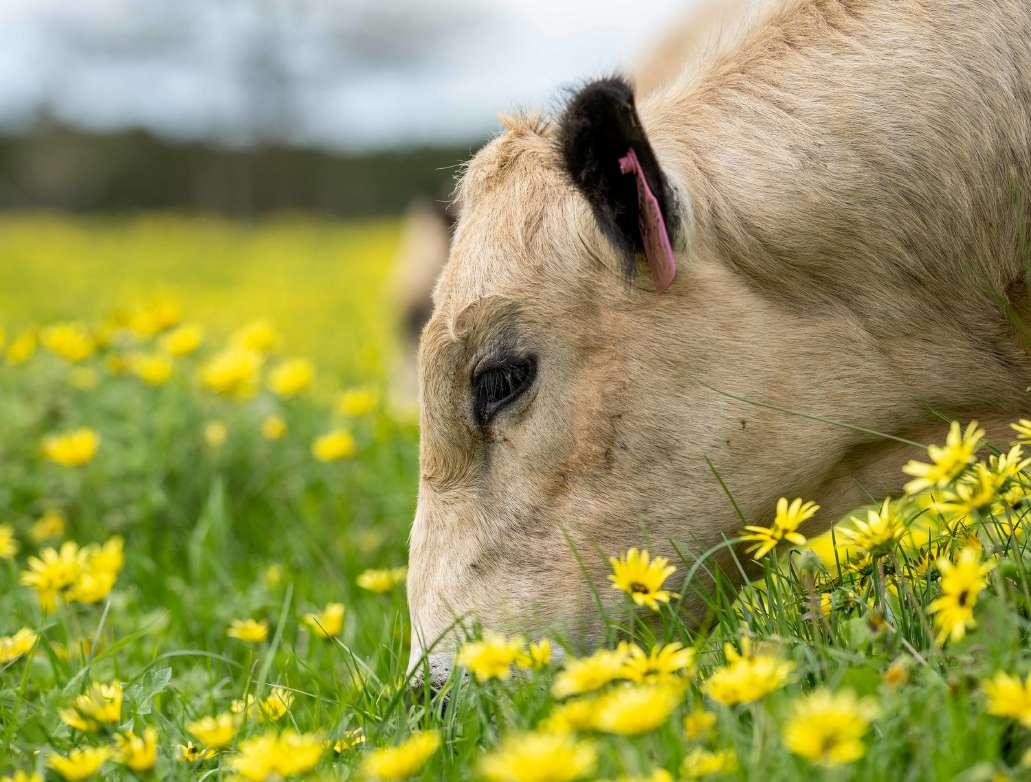
land is not just a Brazilian problem; the USA allocates up to 36% of its corn and soy to the production of biofuels.
Sugar is just one of the commodities that suffers from the Brazilian Paradox; vegetable oils, soy and other cooking oils have all been impacted by the demand on biofuels. In Mexico people took to the streets in what became known as the ‘tortilla riots’ when the price of corn tortillas went from eight to more than 10 pesos per kilo in late 2006.
Similarly, Indonesia banned the export of palm oil earlier in 2022, as the government was worried about the social impact of running out of the country’s staple cooking oil. This contributed to global supply issues caused by droughts in major
production countries and exacerbated by the war in the Ukraine. A knock-on effect was the soaring price of soy beans, which sent millions of Indonesians back into poverty.
DOING MORE WITH LESS
The driving factor here is that we have diminishing arable land, so we can’t just go and grow more food. In short, we need our farmers to do more with less. Every acre of land is needed to produce more biomass and create more food and more energy. Biomass also sequesters carbon as part of a regenerative cycle, and we need more of that, too. But why do we need to think in terms of food versus energy?
28 COP27 mygreenpod.com
Defugo’s David Coleman on how the debate around food versus energy has been reframed for the future
The simple reason is that the market continually looks at the problem through the same lens; as Henry Ford famously said, if he had asked the people what they wanted, they would have said a faster horse.
What we need is a paradigm shift in thinking, like Henry did with his Model-T all those years ago. Biomass needs to be viewed in a holistic way instead of as a single point of value. What does the entire plant represent in value? Once we have understood that, how do we recover this value?
CREATING A SYMPHONY
The hemp industry talks of the Entourage Effect, which essentially is all of the elements of the hemp plant working together to bring the best results. At Defugo we have taken this concept and focused on the four elements of the debate – land, biomass, processing and decarbonisation – to develop a process called the Symphony Effect.
It essentially allows every element of the process – land, soil, processing and decarbonisation – to be holistically accessed, integrated and bought together to create far greater output than ever before. Just as the four parts of a symphony orchestra come together to make a whole much greater than the mere sum of its constituent parts.
The resulting symphony of food, energy and decarbonisation will lower costs, restore agricultural land, create jobs and provide a stable green economy for generations to come.
LAND: THE FOUNDATION
Without the land, there is no biomass for processing, so it is the foundation that we must
CLOCKWISE
Our growing population and finite arable land mean we need our farmers to do more with less; burning sugarcane (in far north Queensland, Australia) is one of the ways valuable elements of this crop are lost during processing

build, protect and nurture. Regenerative farming is the key here, as modern farmers relearn that we need to put back into the soil all that it gives out by growing our food and creating our energy.
The reduction – and the preferred removal –of chemicals and synthetic fertilisers, along with the current over-application of NPK, needs to be addressed. Soils, like plants, all have different needs; they must be constantly tested and monitored, just as we need regular health check-ups to ensure we don’t get out of balance. Using natural fertilisers like infused biochar holds water as well as nutrients in the soil, and locks away carbon for hundreds of years. These are the building blocks for soil microbes, the good guys of soil health.
A HOLISTIC VIEW OF BIOMASS
The traditional view of biomass is to grow a plant that contains the most of what you are looking for. ›
FOOD & DRINK mygreenpod.com COP27 29
Sugarcane, for example, is a desirable biomass because it contains such high levels of sucrose, which can be used for either food or energy in the form of ethanol.
A recent article by biofuelsdigest.com framed the issues around access to biomass in Brazil as the only real differentiator between he who wins and loses in the ‘sugar mix’ race. This again fails to look at the biomass in a holistic way: what else is in the biomass and what’s the greatest economic value? What impact is this crop having on the environment, from the soil to our atmosphere?

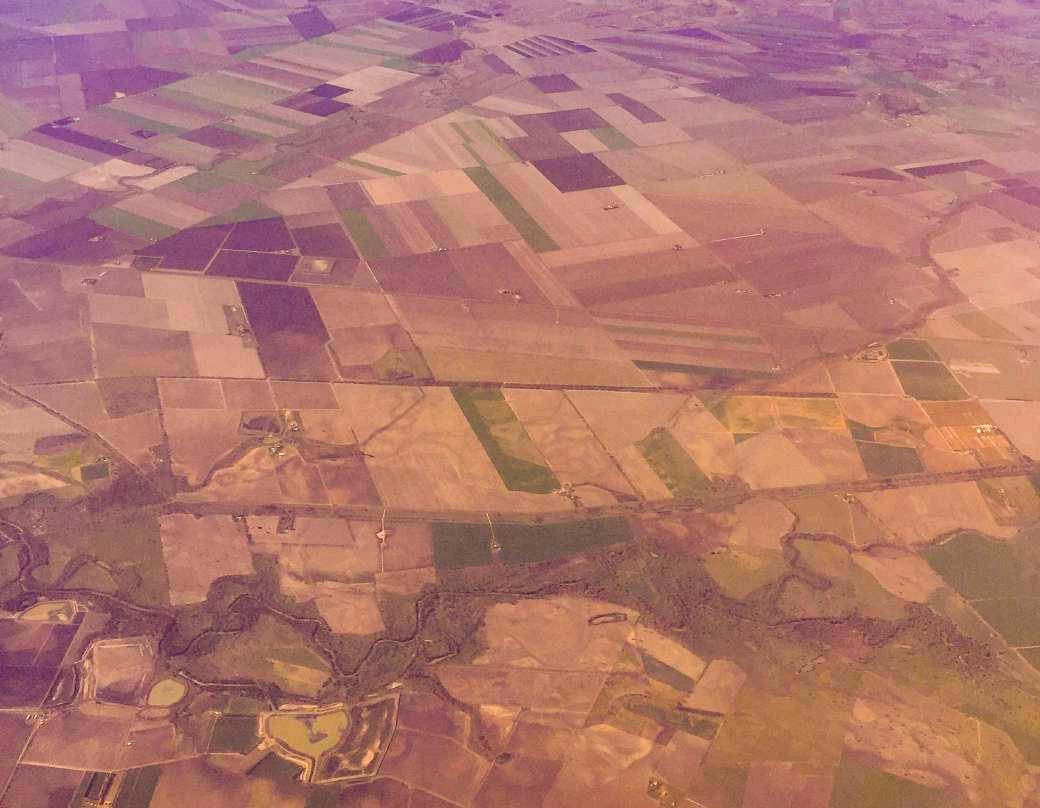
As well as sucrose, sugarcane contains dietary fibres, lots of potable water, non-dietary fibres and polyphenols. When viewed through this lens, the plant becomes far more enticing economically for its potential role in feeding the world.
Unfortunately the way we process sugarcane destroys all of these valuable elements, and the plant really falls down environmentally. It’s a very slow-growing crop, taking two years to mature, and isn’t great at sequestering carbon. Unfortunately we burn millions of hectares of it each year, spewing millions of tonnes of CO2 into the atmosphere. The resulting environmental disasters can be seen and felt in the ash rain that falls hundreds of kilometres away.
In the context of the Symphony, the biomass needs to do way more than one thing, especially as only so many plants will fit on an acre of land.
30 COP27 mygreenpod.com
We need to break with traditional crops and look for plant species that will deliver the needs of a hungry, growing population that needs energy.
With this task in mind, Sydney University has been working with Defugo to develop a new crop that is fast growing, delivers high-grade plant proteins from its leaf matter and seeds and energy from its stalk. The plant has a deep, complex root system that sequesters huge volumes of atmospheric carbon into the soil. Testing and trials have shown that this can be as much as 80MT a hectare per rotation. In the context of cropping over millions of hectares globally, this is a significant amount of carbon removal from our atmosphere, multiple times a year. It’s also very high-density biomass, delivering 16-30MT per hectare per rotation. It’s not hemp and it’s legal everywhere.
PROCESSING: DON’T CRUSH IT
The process of crushing destroys nearly everything of value in biomass and even restricts access to a fair percentage of the target extract originally desired. Nowhere is this more acutely seen than in the processing of sugarcane, where sucrose remains in cake, molasses and in the bagasse.
While Generation 2 processing facilities view bagasse as the solution to the problem, Defugo has approached this problem by not creating the bagasse at all. Our Universal Processing Plant (UPP) allows the holistic value of the biomass to be realised, and each part of the plant to be extracted precisely and recovered completely. This means that there is no longer a debate over food versus energy, as now the biomass delivers 100% of its food value and creates low-cost energy in the form of electricity, renewable diesel, SAF, ethanol and hydrogen – all with zero waste.
The UPP can process any biomass – from traditional crops to new fast-growing, high-output crops with voluminous carbon sequestration –without the capital costs of a separate processing facility. The final act of the UPP, when converting the woody parts of the biomass to energy, is to create high-quality biochar. We now come back to where we started, connecting the circle of soil-to-plant-to-soil at scale.
DECARBONISATION AND FARMING
With the correct biomass selection, farmers will be able to sequester large volumes of carbon in their soil with every crop rotation. Our farmlands would then act like forests, drawing carbon from the atmosphere and locking it into our soil.
The contributions of this high-volume carbon sequestration and the low greenhouse gas (GHG) emissions created by biofuels makes a very strong argument for biofuels to become the ‘gap’ filler in our global transportation systems until we find a better solution.
This would be especially so if the world followed the precedent set by Brazil and removed the E10 blend regulations; nearly every car in Brazil runs on E100 and our trucks and trains could all run on D100 too if our governments and transport operators had the same appetite for carbon
reduction. This is not a technical problem, it’s a policy failure.
FEEDING 9 BILLION PEOPLE
Why are we relying on Brazil to carry the load? Australia, my home country, runs on diesel –to the tune of over 30,000,000,000 litres a year. According to Australian Carbon, replacing this diesel with renewable D100, made from the right biomass, would sequester 139,280,000 metric tonnes of carbon into our soils and replace a further 90,299,920 metric tonnes of emissions.
Australia has vast tracts of land that are either under-utilised or locked up in single-use leases, such as the Northern Territories pastural lease programmes.
Australia would need under 1% of its current land mass to be converted to a high-carbon sequestering biomass to become carbon neutral, or just 4.25% of unused Crown lands. This would be achieved while simultaneously producing food and energy and providing regional Australia with long-term job security.
In his new book, Superpower Transformation: Making Australia’s Zero Carbon Future, leading economist Ross Garnaut states that biomass is one of the five pillars that would allow Australia to become a renewables superpower. In the book he states that Australia could replace up to 8% of global GHG emissions – the equivalent of continental Europe, including Britain, removing all its emissions.
Now that the argument of food versus energy has been removed and we have a clear pathway for how to feed 9 billion people on this planet (without destroying it) by 2050 and beyond, will our politicians at COP27 have the fortitude to change policies and make this happen?
CLOCKWISE
As food prices soar and the global population rises, we need to meet the challenge of providing healthy food for all; when managed well, farmlands can act like forests and lock carbon in the soil; Australia could become carbon neutral by converting just 1% of its land mass
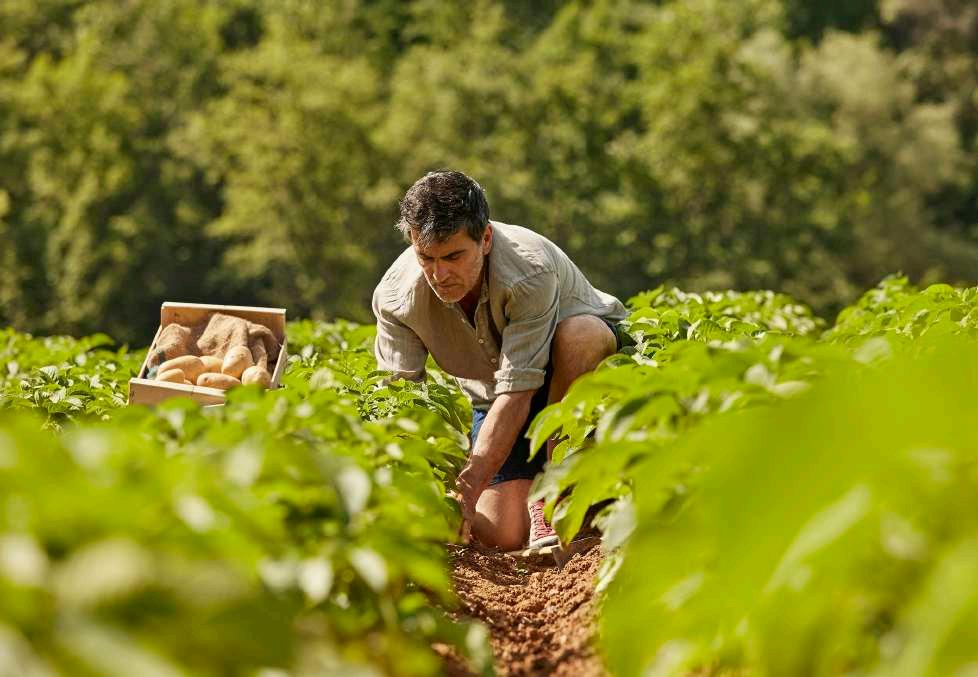
Find out more
n Discover more about Defugo and how its technology is helping to reframe the debate around food and energy at defugo.com
mygreenpod.com COP27 31 FOOD & DRINK
Healthy soil for healthy life
Cashmore, managing director at the Soil Association, shares how you can help protect our soils
Ahead of this year’s Climate Change Conference – COP27 – in the Egyptian city of Sharm el-Sheikh, the Soil Association is calling for soil health to be prioritised as a solution to the climate and nature crises.
Faced with a growing energy crisis, extreme global weather events and record greenhouse gas emissions, the aim of COP27 is to deliver renewed support for the international treaty on climate change adopted in Paris in 2015.
We will hear how we need to be steadfast in our resolve to reduce global greenhouse gas emissions, build resilience and adapt to the impacts of climate change, while committing to a level of financial support that would be sufficient to allow developing countries to take climate action. It really is time that we get on and deliver on these commitments.
As part of this it is vital that we recognise the role of good soil health – for the planet and our own health – and how it underpins all our efforts to tackle climate change.
LIFE BEGINS WITH SOIL
Soil contains three times more carbon than the atmosphere but, depending on how it is managed, it can either be the villain or the superhero: healthy soil stores more carbon while degraded soil leaks carbon back out.

Healthy soil acts as a sponge; it soaks up water, which can help prevent floods and mitigate the effects of droughts on crops. It supports biodiverse habitats and is home to billions of microorganisms, as well as being the ultimate provider of vital human commodities such as food and textiles. We neglect it at our peril.
All life begins and ends in soil. It is a living system –a combination of minerals, organic matter, air, water and organisms – but today one third of the world’s
arable soil or land growing crops is degraded. Every minute we lose an area of soil the size of 30 foot ball pitches – despite the fact that we need it for 95% of our food.
WORKING WITH NATURE
We simply cannot meet our net zero targets if we ignore soil health. In the UK our soils are eroded and depleted and soil biodiversity is damaged, meaning nature is suffering, too. Conventional and intensive farming practices, including the use of chemical fertilisers and pesticides, have caused untold damage.
The good news is that, by changing the way we farm and eat, we can help protect our soils for generations to come – and they can play a significant role in slowing climate change by capturing carbon and addressing the biodiversity crisis at one and the same time.
A shift to agroecological farming practices –where we work with, not against, nature – can restore the balance and regenerate our soils.
We are encouraging farmers to make the change and governments to support the transition to nature-friendly farming. You can help too by choosing organic and supporting your local, regenerative farmers. Look for environmental credentials on all your products, including things like the clothes you buy.
WHY WE NEED HEALTHY SOIL
plants – plant flowers and plants that are beneficial to soil health. Plants that pull nitrogen from the air help to increase fertility in the soil while those with deep roots promote healthy soil structure and draw up nutrients for other plants to use. 4 Support soil-friendly agroecological farming –the way we eat and farm makes a big difference for our soils. Choosing to support
agroecological farming, like organic, in your local area is a big help for building soil fertility naturally. Find a local box scheme to get started! 5 Speak out for soil –raising awareness about soil degradation is vital, so share this information with your friends and family and encourage them to ‘save their soil’, too. We must look after our soil and there is a growing and supportive movement trying to do just that. Together we can influence politicians to acknowledge and prioritise soil health.
We know that when we look after the soil, nature flourishes. On organic farms, which prioritise soil health, there is on average 44% more soil carbon and 50% more birds, insects and other wildlife than on conventional farms.
Considering that just one teaspoon of soil can hold more organisms than there are people on the whole planet, we think that our soils are well worth protecting! We can all play a part in helping to restore the health of our soil. Taking action at home (see box of tips, left) is a great way to learn how soils work, protect your own garden and build biodiversity – welcoming nature back.
Find out more
n Discover small changes that you can make at soilassociation.org/take-action/pledge-for-our-planet/ n ‘Bug the new PM’ to save nature: add your name to the petition at change.org/p/bug-the-new-pm-savenature-in-your-first-100-days-of-government
FOOD & DRINK
James
PHOTOGRAPHY ISTOCK
1 Grow your own – growing different vegetables and plants in your own garden, allotment or even
box will help recycle nutrients back
to get your food. 2 Compost
vegetables and organic matter like leaves. 3 Grow soil-saving
a window
into the soil – and it’s an environmentally friendly way
– organic matter in soil comes from plants and animals and is an essential ingredient for healthy soil.Organic farmers use 65% more manure compost than conventional farms, resulting in higher soil organic matter. You can do the same at home by composting waste
FIVE
32 COP27 mygreenpod.com
WAYS TO PROTECT SOIL AT HOME
When organisations and policymakers talk about mitigating climate change, much emphasis is placed on carbon reduction targets. It’s easy to think about the road to net zero purely in terms of reducing carbon – without thinking about the wider impact on people and nature.
Our planet, and everything on it, is part of one interconnected system, which is why, at Triodos Bank, we look at the journey to net zero in a holistic sense. Our own goal is to reach net zero across our operations, loans and investments by 2035 and we will continue to reduce all emissions across our portfolio beyond the net zero target, going beyond carbon neutrality and aiming to be carbon negative and nature positive.
‘AS ONE TO ZERO’
Our strategy is called As One To Zero, because if we’re going to reach net zero – and meaningfully address the climate crisis – we need to do it as one.
We want to reduce emissions while respecting our planet’s boundaries and achieving social inclusion for all, to take into account social and cultural considerations as we decarbonise. A journey where no one gets left behind.
As a lender, this means increasing financial support to initiatives that conserve and restore nature, back renewable energy generation, retrofit our built environment and focus on transitioning vital services like healthcare and transport.
SUPPORTING RENEWABLES
Triodos Bank has long been committed to renewable energy; when we started out, only a tiny amount of the UK’s electricity was produced by renewables, and investment in the sector was innovative and groundbreaking. That number is now around 40%.
We’ll continue to support the renewable energy sector because we all need that percentage to keep rising; it is a cornerstone of decarbonisation, but a much wider transformation is required. Sus tainability isn’t just about an energy transition, it’s also about making sure we support people and communities.
COMMUNITIES & HOUSING
Our business banking customers also include housing providers that are harnessing renewable energy to improve the environmental sustainability of their homes while benefiting the local communities in which they operate.
Fyne Energy has received finance to support the creation of a 6.9 megawatt wind farm in Argyll and Bute. The project aims to produce enough clean energy to power around 4,000 local housing association households.
Another customer we work with is the Rural Urban Synthesis Society (RUSS), a communityowned not-for-profit that provides sustainable and affordable housing. The development RUSS is working on in Ladywell, South London is a model for creating a socially, economically and environmentally sustainable neighbourhood of high-quality homes.
BANKING FOR POSITIVE CHANGE
Find out why Triodos Bank is a My Green Pod Hero at mygreenpod.com/heroes
INVESTING IN THE NATURAL WORLD
Restoring our natural environment and reversing biodiversity loss are crucial for our future economic prosperity and wellbeing, as well as preventing, and becoming more resilient to, climate change.
Through a bond offer on our crowdfunding platform, Scottish charity Trees for Life has been able to raise £2 million to part-fund the world’s first rewilding centre in the Highlands. Showcasing action on the nature and climate emergencies, the project will create green jobs and provide people with inspiring – and galvanising – experiences.
We continue to explore models for nature-based investing. Rather than exploiting the environment, we aim to create an economy that reflects and fully
values the vital role that nature plays, and creates the drivers needed to ensure its protection.
DRIVING CHANGE
Ever since Triodos Bank was first established in the Netherlands in 1980 – and in the UK in 1995 –we’ve been guided by our mission to direct money into organisations that are delivering positive social and environmental impact.

COP27 will once again highlight the very urgent need to tackle the climate crisis, and we provide a model of what our financial system could do if it plays its part in supporting and helping to drive the changes needed. We know finance has the power to be a force for good, and our banking and financial services are for organisations that want to change the world for the better. We focus on impact, rather than a swift financial return, and on building a long-term relationship that delivers financing solutions to support a brighter future.
Find out more n Discover how Triodos can help your organisation to achieve its goals at triodos.co.uk/business
MONEY
Gwyn Rhodes, director of business banking at Triodos Bank UK, explains why we need a holistic approach to achieving net zero
PHOTOGRAPHY TREES FOR LIFE
mygreenpod.com COP27 33
MONEY
TALKS
As the wheels of COP27 whirr into motion, for the UK a long and winding journey to net zero remains ahead. Achieving carbon emissions targets and reversing ecosystem breakdown requires a whole-economy transition. It can feel like an overwhelming objective but, while appreciating the bigger picture is important, this transition will be made a reality if each of us concentrates on the positive actions that we can take – some of them small at first – and speaks up for the future we want.
For Ecology, committing ourselves in service of positive change isn’t something new; through our lending for sustainable projects, we’ve been supporting the development of lowimpact carbon homes and communities for over 40 years. Our ecological mission remains the same as when we first began, but has acquired an increasing urgency.
The escalating destruction of our ecosystems means that we, along with the rest of the financial sector, now have a unique responsibility to take deliberate and ambitious action to avert the worst impacts of ecological breakdown.
COP27 has been hailed as the ‘implementation COP’ –the one where we’ll see the pledges announced at previous COPs transformed into real action. There will be a particular focus on the need to activate finance to unleash the $125 trillion in investment that the International Energy Agency estimates is needed to achieve the world’s 2050 climate goals. This is something we, and many others, sincerely hope will play out.
So, let’s turn to the goals of COP27 and the progress that we want to see within Ecology’s focus areas: ethical finance, low-impact carbon building and resilient communities.
1FROM PLEDGING TO IMPLEMENTING
The pledges and targets at COP26 reinforced the critical role of green finance to support the transition to a low-carbon economy. Ecology is a living example of this, providing lending for sustainable living, including energy-efficient self-builds and retrofits of existing homes.
Given that UK homes currently account for around 20% of the country’s carbon emissions and are some of the least efficient in the world, there are huge gains to be made from improving the performance of our existing housing stock and ensuring that new homes are built to the best possible standards.

For this to happen, we need a coordinated approach to determine the best efficiency measures for each home, alongside grants and incentives – especially for properties that are more difficult to improve.
This is an approach that is critical to achieving net zero goals not only in the UK, but also in other countries within which domestic energy use contributes a significant proportion of CO2 emissions. Other countries have already adopted many forward-thinking initiatives, and in that sense the UK is behind the curve.
Here in the UK, we’re seeing a big push to install heat pumps, with the government providing grants to allow homeowners to replace inefficient boilers with low-carbon systems. Alongside this, we recently introduced an incentive option for our borrowers to install heat pumps.
While heat pumps are a step in the right direction, homeowners also need support to improve insulation and ventilation if they are to create low-carbon, healthy living spaces and realise the potential of any energy-saving technology. This is why Ecology is calling for a coordinated National Retrofit Programme to address the fragmented energy-efficiency supply chain and skills shortages, so that we can kickstart the retrofit revolution.
2DELIVERING ON ADAPTATION
Helping people, communities and countries to protect themselves from the effects of climate change is crucial to the low-carbon transition. The impacts of the climate crisis are already being felt around the globe, sadly with the effects often disproportionately impacting those with the lowest incomes and the least resources to cope.
At Ecology, we know that resilient communities are integral to climate adaptation. Much of our lending is targeted at supporting community-led solutions to the provision of affordable, low-energy homes for local people. These groups are often formed when people become frustrated at being trapped in a cycle of poor-quality homes with high rents and sub-standard energy performance.
Because they sit outside the normal criteria of mainstream banks, community-led projects can struggle to get mortgages – despite having a sound financial plan as well as a potentially life-changing mission that fits with wider net zero goals.
Through our support for community-led groups, Ecology has become a leading advocate of democratic and locally rooted housing, supporting some of the UK’s most innovative and inspiring low-impact communities and co-operatives.
We want to see more recognition and on-the-ground support for community-led responses to the climate crisis and the net zero transition. Often, communities are the best architects of their own solutions, and these will differ according to the opportunities, constraints and unique experiences that define them. What we
34 COP27 mygreenpod.com
Gareth Griffiths, CEO at Ecology Building Society, considers the aims of COP27 and the courage required to move from words to action
need is the long-term policy and financial support to empower all communities to put their solutions into action.
3 MAKING FINANCE FLOWS A REALITY
Harnessing the force of finance is essential to achieving net zero. This means redirecting capital from activities that are part of the problem to those that will help us to adapt to and limit climate change, as well as ensuring that money is directed towards those whose lives are most impacted.
Despite its flaws, the Glasgow Climate Pact, and its commitment to redirect investment in fossil fuels towards greener technologies, remains a significant achievement. Collaboration is essential here; only when all financial organisations commit to becoming net zero in their financed emissions (the carbon released by the activities they fund) –and when wider systemic changes prioritise a clean-energy future – will the flow of money into new oil, gas and coal be shut off. Ecology is proud to be leading the way; in 2021 we became the first building society to publish the carbon footprint of our residential mortgage lending.
COP26 also saw the creation of the Glasgow Alliance for Net Zero (GFANZ), a global coalition of financial institutions
committed to net zero by 2050, of which Ecology is a member. The Alliance is calling on its 500 members, including some of the world’s biggest banks, to publish intermediate 2030 net zero targets to ensure that they are on track to achieve 2050 goals. We have recently published our own 2030 targets and see GFANZ as providing essential momentum in the mobilisation and accountability of finance in the low-carbon transition.
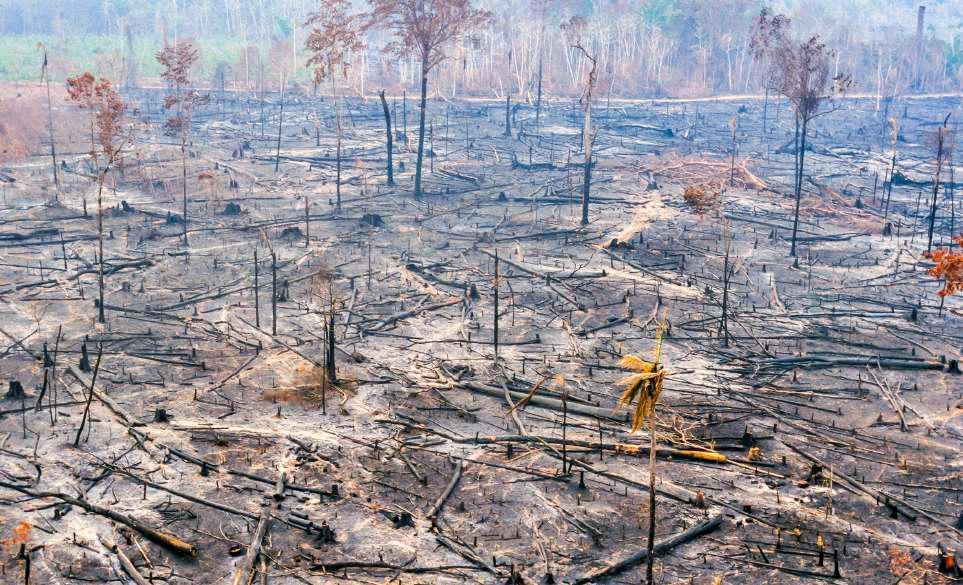
4
ACHIEVING A JUST TRANSITION
The move to net zero represents huge opportunities; we have the chance to make our homes, communities and economies more resilient and to safeguard a flourishing natural world, all while unleashing a new era of job opportunities in green energy, finance, construction and more.
At the heart of making a just transition a reality is the necessity that we leave no one behind. It is within all our interests to ensure that those who are the most vulnerable are at the centre of conversations and decision-making. We each have a responsibility, whether as individuals or organisations, to use our voice to speak up for what we believe to be right.
CLOCKWISE
Communities are often the best architects of their own solutions, but need support to translate them into action; homeowners need help to create healthy, low-carbon living spaces; capital must be redirected from projects that are part of the problem to initiatives that will help to mitigate climate change
At Ecology, we see agitating for positive change as one of our key roles and our members tell us that they expect us to be using our influence for good. By championing the cause for community-led housing, low-impact building and affordable homes, we aim to embed ‘people, planet and prosperity’ at the heart of net zero action.
A TIME FOR COURAGE
Four goals, four opportunities. As delegates gather in Egypt’s Sharm El Sheikh, we at Ecology will be continuing our day-to-day work, helping greener homes and communities to become a reality. We were founded by a small group of committed individuals who dared to do something different and to put their vision of a better future into action. Now, as we wait to see whether COP27 will be the catalyst for the meaningful action that is so desperately needed, we hope that the same spirit of courage and collaboration will prevail.
Find
out more
n Discover how Ecology Building Society is enabling ecological homes and sustainable communities through the flow of ethical finance between savers and borrowers: ecology.co.uk

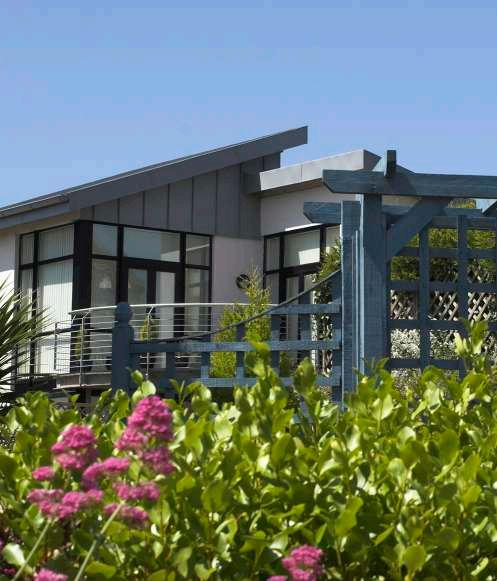
MONEY mygreenpod.com COP27 35
PHOTOGRAPHY ISTOCK
HOME IS WHERE THE HEAT IS
I’m sure I’m not the only dad who has spent years vigilantly switching off lights and turning down the thermostat on behalf of his family. For most of those years my goal was to keep the cost of our energy bills down, but recently I’ve started thinking differently. As my daughters have grown up, I’ve watched climate change cause them a great deal of anxiety. Family conversations have shifted from Love Island to global warming, and both girls are now looking at careers in sustainability.
At this stage in my career, I feel it’s important that I also make a positive environmental impact with any work that I do – and as an engineer, I’m excited by the idea of trying to solve big problems.
When I learned that over 20% of the UK’s carbon emissions are created by our homes, I was inspired to work on addressing this problem and founded Snugg, an online platform that helps people make their homes more energy efficient.
IMPROVING EFFICIENCY
Recently, a study published by Nesta revealed that if 10 million households reduced their gas boiler’s flow temperature (the temperature it heats water
up to before pumping it round your radiators), they’d collectively stop 1.7 million tonnes of carbon emissions from being released into the atmosphere each year. That’s equivalent to taking nearly six million transatlantic flights out of the sky!
Adjusting our boilers doesn’t come close to the energy savings that could be made by installing solar panels on our roofs, heat pumps in our gardens and insulation in our walls.


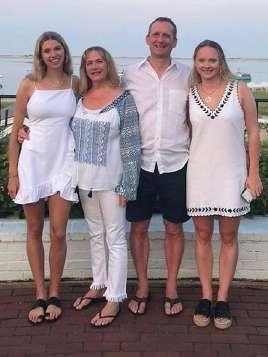
Snugg’s own research shows that the typical Edinburgh home would save well over a tonne of carbon emissions on its own if it made these changes. Some homes could save over four tonnes. Imagine the environmental benefit if all of the UK’s 24 million homes followed suit.
COSTS AND SAVINGS
Of course, there’s an upfront cost (which can be funded through grants or financing options), but there are plenty of financial upsides, too.
Energy bills can be much lower when a home retains heat more efficiently – and with solar panels on the roof, as well as getting free electricity when the sun shines you can also earn money by
CLOCKWISE
selling unused energy back to the grid. Plus, research shows that making efficiency improvements could increase the value of your home by up to 10%. That’s a compelling case – even for a climate sceptic.
As I’m sure you know, addressing climate change is about more than planting trees and building wind turbines. We can reduce a huge amount of carbon emissions simply by making our homes more energy efficient.
But through no fault of their own, a large number of homeowners don’t realise how much their home is contributing to climate change. It rarely makes the news. For those who do, the process of making the necessary improvements can still be a confusing and time-consuming experience – complicated further by the fact that every home is unique and there’s no one-size-fitsall solution.
SIMPLIFIED IMPROVEMENTS
I believe that more people would be willing to make their homes more energy efficient if the process of identifying, financing and installing improvements were simpler. This is what motivates us at Snugg – and it’s why we’ve focused on building an easy-touse platform that clearly shows which improvements could have the biggest impact on your home and, crucially, how to get them installed.
Inspired by my girls’ futures, I’ve made some home efficiency improvements already – and I urge others to consider doing the same. Look around your home: could your boiler’s flow temperature be turned down? Are your walls insulated? Do you have space for a few solar panels?
By making a few changes, you could drastically reduce your home’s carbon emissions, cut your energy bills by up to £1,500 a year and increase the value of your home by up to 10%. It’s a win for you and the planet.
Find out more n Get a personalised plan for a more efficient home at snuggenergy.com
36 COP27 mygreenpod.com ENERGY
Robin Peters, founder and CEO of Snugg, explains how he’s making energy-efficient homes simple and affordable
is unique, so there
one-size-fits-all
to improving energy efficiency;
him to
the
there are
the carbon
our
Every home
is no
solution
Robin’s daughters have inspired
help
environment;
many ways to reduce
impact of
homes, including rooftop solar
Find out why Snugg is a My Green Pod Hero at mygreenpod.com
Web hosting that doesn’t cost the Earth
















































2,183,334 trees planted (and counting!) 1,530 years of staff CO2 emissions offset 100% renewably powered since 2017
For those of you who’d like to check we’re not greenwashing, we’ve got your back, visit krystal.uk/green
HYDROGEN vs HEAT PUMPS
Home heating is responsible for up to 14% of the UK’s total carbon emissions. That’s a staggering amount of carbon, but it’s also a contribution that people like you and I now have the power to change, without having to sacrifice comfort or convenience.
Climate-friendly heating is finally becoming an accessible alternative to gas and oil boilers for thousands of households across the UK, reducing people’s need to rely on extremely pricey gas and paving the way for a decarbonised future.
In April 2022, the government launched its Boiler Upgrade Scheme, offering homeowners up to £6,000 if they choose to replace their old gas heating system with a heat pump or biomass boiler. Since then, Octopus Energy has set out to change the record on heating for good, by installing air-source heat pumps for roughly the same price as a gas boiler. So has the time finally come for climate-friendly heating to kick gas to the curb? And if so, are heat pumps the winning solution –or could the beacon be handed to one of their competitors?
WHAT IS A HEAT PUMP?
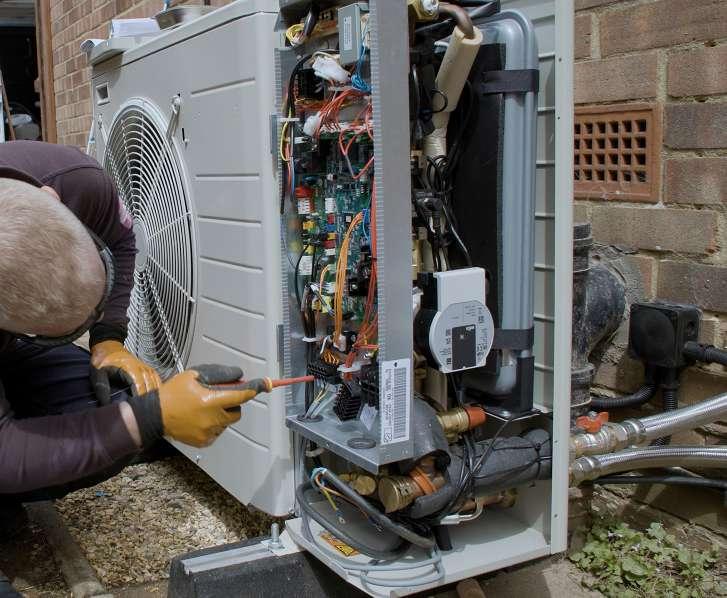
Heat pumps are a tried and tested technology – in fact, 97% of us already have something similar in our homes. Fridges work just like a heat pump – so do air conditioners. The only difference is that fridges take energy from your home and use it to cool the air inside them. Heat pumps, on the other hand, syphon energy from cooler air outside and use it to heat our
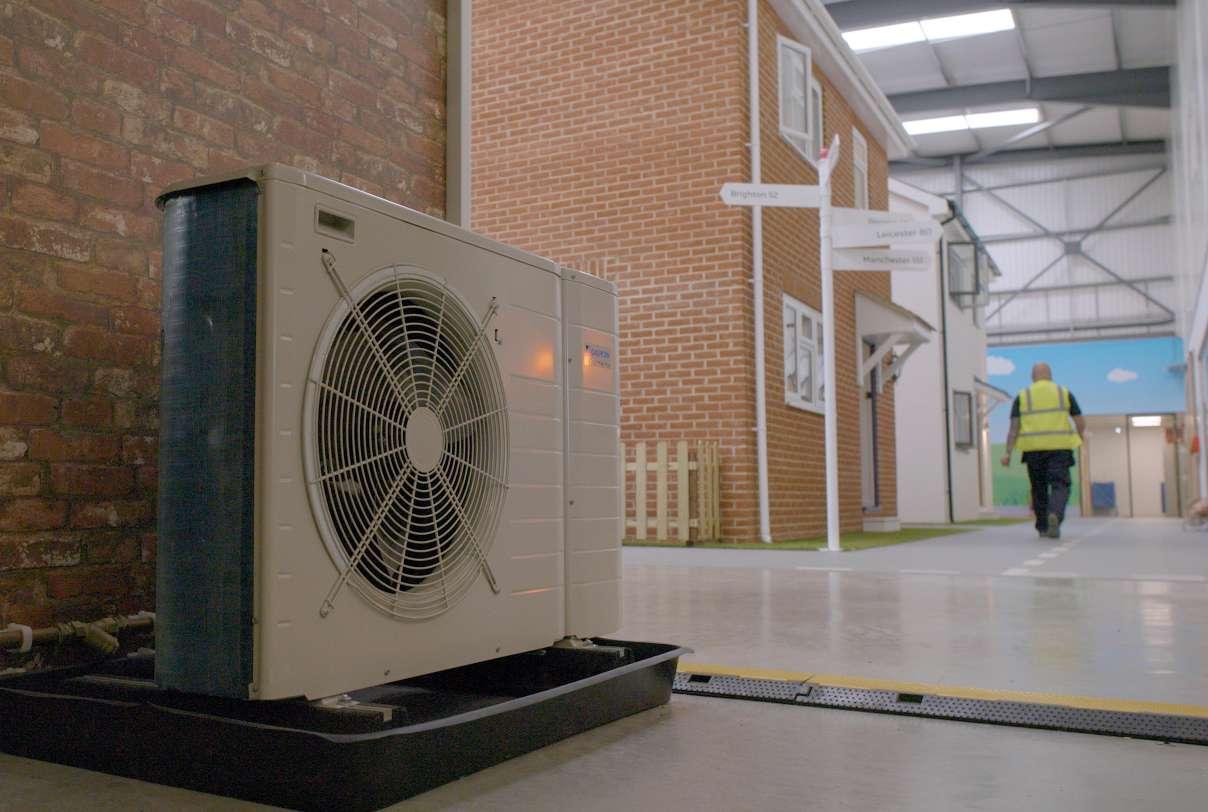
38 COP27 mygreenpod.com
Find out why Octopus Energy’s Super Green Octopus Tariff is a My Green Pod Hero at mygreenpod.com
Octopus Energy’s Becky Boulton and Jackson Howarth on the race to decarbonise home heating
CLOCKWISE
Air-source heat pumps could help UK homes ditch gas; heat pumps are four times more efficient than combi gas boilers; Octopus Energy is installing air-source heat pumps for the same price as gas boilers
homes (they’re what’s known as ‘active heat exchangers’). Like most home appliances, a heat pump runs on electricity. This means that they reap the rewards of the increasingly clean, green electricity in the electrical grid (in 2021, 40% of the UK’s electricity was generated by renewables).
Heat pumps don’t just use electricity to produce heating, they also use it to harness extra energy from the atmosphere, and then use that to help warm your home. With this in mind, you actually get more heat energy out of a heat pump than the electrical energy you put in; compared with a traditional combi boiler (with a 75-90% efficiency), heat pumps generally achieve a 300-400% efficiency, making them four times more efficient. This gives customers way more bang for their buck, and gives heat pumps a green edge over their competitors.
THE GREAT GREEN HEAT DEBATE
Of course, heat pumps aren’t the only heating solution on the market. Another low-carbon alternative – hydrogen heating – has been getting a lot of attention lately for its potential to replace methane as our gas of choice.
Burning hydrogen (or using it to power a ‘hydrogen fuel cell’) is a lot cleaner than burning gas. It doesn’t produce any carbon emissions – in fact, the only byproduct is water. This has led some to argue that we should use hydrogen, rather than gas, to power our home heating. But unlike fossil fuels, burning
Until we have the infrastructure in place to support green hydrogen generation at scale, hydrogen heating would mean piping dirty grey hydrogen to homes, which would extend our reliance on fossil fuels – damaging the climate further rather than protecting it.
Even if we did have enough green hydrogen, a recent review of 32 hydrogen studies in the scientific journal Joule found that hydrogen boilers are actually far less efficient, and more expensive, than heat pumps. This sentiment was echoed by David Cebon of the Hydrogen Science Coalition who, speaking to the BBC, recently explained that: ‘In the UK, heating homes with green hydrogen would use approximately six times more renewable electricity than heat pumps.’
On a wider, societal scale, the ‘repurposing’ of the polluting gas network for hydrogen would be a huge job, which unfortunately wouldn’t be a case of simply switching methane for hydrogen. It would involve changing millions of boilers, as well as ‘relaxing’ 15% of the pipes in the network. This is also expected to be extremely expensive; in 2020 the UK’s gas networks estimated the cost to be an eye-watering £900m. If money needs to be spent to change home heating, it may as well be on the most efficient option –an option that uses less green electricity to make more heat.
WHY WE’RE BACKING HEAT PUMPS
Having weighed up the evidence in the race for green heating, heat pumps continue to come out tops. For starters, they’re a tried and tested technology. In fact, a recent poll found that Octopus heat pump customers were 20% more satisfied with their heating overall than those with traditional heating. They’re also far more efficient, safer and – given the lack of truly green hydrogen – greener, too.
Heat pumps are also getting cheaper to buy, and run at a much faster rate than their competitors. According to the International Council on Clean Transportation, ‘By 2050, a heat pump will cost an average £496 a year including energy bills, compared with £1,090 for a hydrogen boiler.’
hydrogen isn’t the issue – producing it is. There are various ways to make hydrogen and each method is colour-coded grey, blue or green. Unfortunately ‘grey hydrogen’, which is extracted from natural gas, is not only the dirtiest method (studies suggest it’s dirtier than burning coal), but also the most common –98% of the world’s hydrogen is produced this way.
Green hydrogen, on the other hand, is far more sustainable. It’s produced by splitting water molecules through electrolysis which, as the name suggests, can be done with electricity. This means it can be powered by climate-friendly renewables, making it much greener. Green hydrogen could be incredibly useful for decarbonising tricky-to-reach sectors, like heavy industry, aviation and heavy transport.
IS GREEN HYDROGEN THE ANSWER?
Octopus Hydrogen, founded by the Octopus Energy Group in 2021, is investing £3bn in green hydrogen production with the intention of tackling carbon emissions in hard-to-reach sectors. But for the time being, green hydrogen is hard to come by, relatively expensive to make and requires a tonne of electricity, so we’ve got to be careful how we use it – and use good alternatives where possible.
Given that heat pumps run on electricity alone, they have the ability to give customers some protection as gas prices skyrocket, and pave the way to leaving gas behind all together. In fact, these days if you’ve got solar panels and a home battery, you can essentially make your home self-sufficient, removing the need to connect to the grid entirely (but we’ll save that for another article).
A WARMER FUTURE
For a long time, heat pumps were a cottage industry with only a few plucky specialist installers, unable to deliver an affordable heat pump solution to the masses. Now Octopus is applying its resources and expertise to do just that, helping to build a greener future for everyone.
By investing £10m in building the UK’s first heat pump research, development and training centre, Octopus Energy will soon double the number of green heating engineers in the UK, employing a mighty 1,000 of them. And that’s not all.
These eco-engineers are backed by an all-new crack squad of green-heating geeks, working hard to make heat pumps more efficient than ever before and helping to integrate them with intelligent tech and ‘smart tariffs’.
Where heat pumps already cost around the same to run as a gas boiler, these boffins have enabled smart-tariff customers to save up to 30% on their bills without sacrificing comfort by running their heat pumps at the greenest, cheapest times.
We’re excited to finally see heat pumps, green and great as they are, delivered – and run – for a fraction of the price.

ENERGY mygreenpod.com COP27 39
EDITOR’S INTERVIEW
THE FUTURE’s SMART
With a looming climate crisis and energy prices soaring in a volatile market, we need to rethink the way we use power. ‘We are so used to just flipping a switch and expecting energy to be instantly available’, says Jani Leirimaa, founder and CEO of Hiven –‘but it doesn’t have to be that way.’
Jani created Hiven to bridge the gap between smart appliances, the power system and consumers: the goal is to make energy consumption cheaper, greener and smarter everywhere, with a new product designed to create a new normal when it comes to the way we consume energy.
A PEOPLE-POWERED APPROACH
In our current transition – to produce more renewable energy and electrify heating and transport on a bigger scale – one of the biggest challenges we face is the capacity of the electricity grid. Hiven’s focus on smart tech is based on the broadly accepted understanding that integrated and responsive technology holds the key to a greener –and cheaper – energy system that balances demand on the grid with the electricity that’s available.
Balancing supply and demand can help to prevent surges in electricity consumption that could lead to blackouts if left unchecked, and allows those with smart appliances and electric cars to draw power when it’s cheapest.
The company connects existing technologies in a new product that showcases the holistic interplay between smart appliances, the grid and, crucially, people; human behaviour is front and centre. ‘Today our habits are only based on flipping a switch, plugging in the charger or staying within a set temperature’, Jani explains. ‘Nothing is done to consider the impact of this behaviour on the power system.’
The way we charge electric cars is a perfect example; we tend to plug them in when we get home and leave them for around 12 hours –even though they probably only need to be connected for a couple of hours. ‘For the user it doesn’t matter what time the charging happens’, Jani says, ‘but it could have a significant impact on the power system’.
SMART CHARGING AND HEATING
Smart charging for electric vehicles (EVs) is one of Hiven’s two core offerings; when an EV is plugged
in at home, Hiven’s technology calculates the best possible time to charge based on cost, CO2 levels from the energy mix and grid congestions. The EV will still be ready by the morning when it’s needed – and with as much charge as is required – but the charging will have taken place at the optimal time.

Hiven’s other key product enables smart heating by connecting to heat pumps, panel heaters, water heaters and other home heating appliances that can be connected and steered in a smart way. This allows the heating and cooling cycles of our homes to be coupled with the daily fluctuations of price and CO2 levels in the energy mix.
‘If the home has solar power installed’, Jani explains, ‘we can also couple heating and charging to harness the full value of the energy that is produced in the home.’
Hiven connects smart appliances over the cloud, meaning no additional hardware or installations are needed. When an appliance is connected, Hiven is able to observe how it is being used and learn the owner’s habits. Energy efficiency algorithms minimise excess consumption, and the energy that is needed can be optimised to deliver a cheaper, greener and smarter use of appliances, without compromising on comfort or routine.
REDUCING ENERGY BILLS
These connectivity and steering services are available to businesses that want to offer more
to their customers, energy companies that want to couple smart steering with their electricity contracts and manufacturers that want their customers to benefit from more embedded smartness in their appliances.
‘Manufacturers of smart appliances have already started with the first important step – minimising unnecessary consumption with a multitude of energy-efficiency efforts’, Jani tells us. ‘The next step is to optimise and couple the remaining energy consumption with renewable production – which can be done automatically through Hiven. The result is more value for their customers.’
Hiven’s platform also has benefits for energy suppliers; until now, the power system has only ever been able to react to the consumption of energy, with limited potential for optimisation. ‘Hiven presents new opportunities for energy companies to make demand side a part of the entire supply chain’, Jani explains. ‘Demand can be optimised together with energy production, trading and portfolio optimisation, to reduce emissions, protect investments and reduce peak risks.’
Energy suppliers also get an opportunity to offer new value-added services with their electricity contracts – which Jani believes will lead to happier customers who ultimately decide to stay with their suppliers for longer.
‘Customers are the most important part in the puzzle because they are the ones who need to

40 COP27 mygreenpod.com
How to make our homes smarter, greener and cheaper – without changing our lifestyles
CLOCKWISE
Hiven’s technology can calculate the cheapest time to charge your electric car, based on when demand for energy is lowest; the company takes a people-centred approach and aims to shift our habits around power consumption
opt to connect and automate their energy consumption’, Jani explains. ‘The benefit is lower energy bills and a lower-than-average CO2 impact, without any compromise.’
The potential reductions in energy bills are significant; while there will be variations according to the energy supplier pricing model and the consumption profile of the consumer, Jani says consumers on a variable price that is based on day-ahead market prices – which is becoming more common in Europe – can save 20-40% annually on their electricity bill.
‘For an electric vehicle in the Nordics, optimising the charging of 50km per night with a 11kW charger can annually save up to €300-400 on the cost of energy’, Jani tells us. ‘Together with suppliers, we can also build models where consumers on fixed-price contracts get a share of the value back for connecting their appliances and letting their supplier steer consumption in a smarter way.’
SMART HOMES OF THE FUTURE
Every individual’s energy efficiency efforts count, but for Jani real environmental impact will only be possible if tens and hundreds of thousands of users – plus energy retailers and manufacturers across Europe – quickly change the way they consume energy.
‘The opportunity and need to make consumption smarter is a global issue’, Jani says. ‘We’re working with customers across Europe and have engaged with users in Finland, Sweden, Norway, Denmark and France – we are already able to use the tech
across Europe and soon globally.’ One key to scaling at pace will involve manufacturers and energy suppliers coming together to promote new services that make consumption more adaptive to the energy system, and then encourage customers to choose them.
Steering consumption away from peaks in cost and CO2 levels often indirectly shifts consumption out of the times when power systems are most constrained. Smart home appliances can react to sudden changes in our power system for short periods of time; during a sudden change in the power system that could potentially lead to a power outage, your EV – along with thousands of others –could stop charging and help to keep the lights on.
BATTERY BACKUPS
Importantly, Hiven is working with its partners –manufacturers of chargers, EVs and heating appliances – to deliver energy security to every home by leveraging the upcoming vehicle-to-grid (V2G) technology of chargers and EVs to form a battery backup and energy store for the home. This will allow solar installations to push surplus energy to the EV, so heating appliances can draw power from the battery rather than the grid when Hiven’s AI-assisted logic determines that it is the most cost-effective option for the homeowner.
Transmission system operators (TSOs), like those demonstrated in California, can also rely on these
home energy stores to provide temporary stabilising power to the grid in case of emergency, for which homeowners can be compensated.
A FAMILIAR FUTURE
‘The future home is only getting more connected and we believe we’re just scratching the surface with the value we can create today’, Jani reveals. ‘At Hiven we want to help these smart, connected appliances to also be energy aware, to change the way we consume energy so it becomes smarter, greener and cheaper.’
The name Hiven itself is a play of the Finnish word ‘particle’ – because the company connects multiple smaller particles to form a bigger system –and the English word for beehive, because the devices connected to its platform are like thousands of busy bees constantly circling the central hive, working together for a greater good.
The platform demonstrates that we make a positive impact without any dramatic changes in our lifestyles. It automatically shifts heating, cooling and charging to hours with renewable production, without any compromise around the comfort of the temperature in our home or the distance we can travel in our electric car.
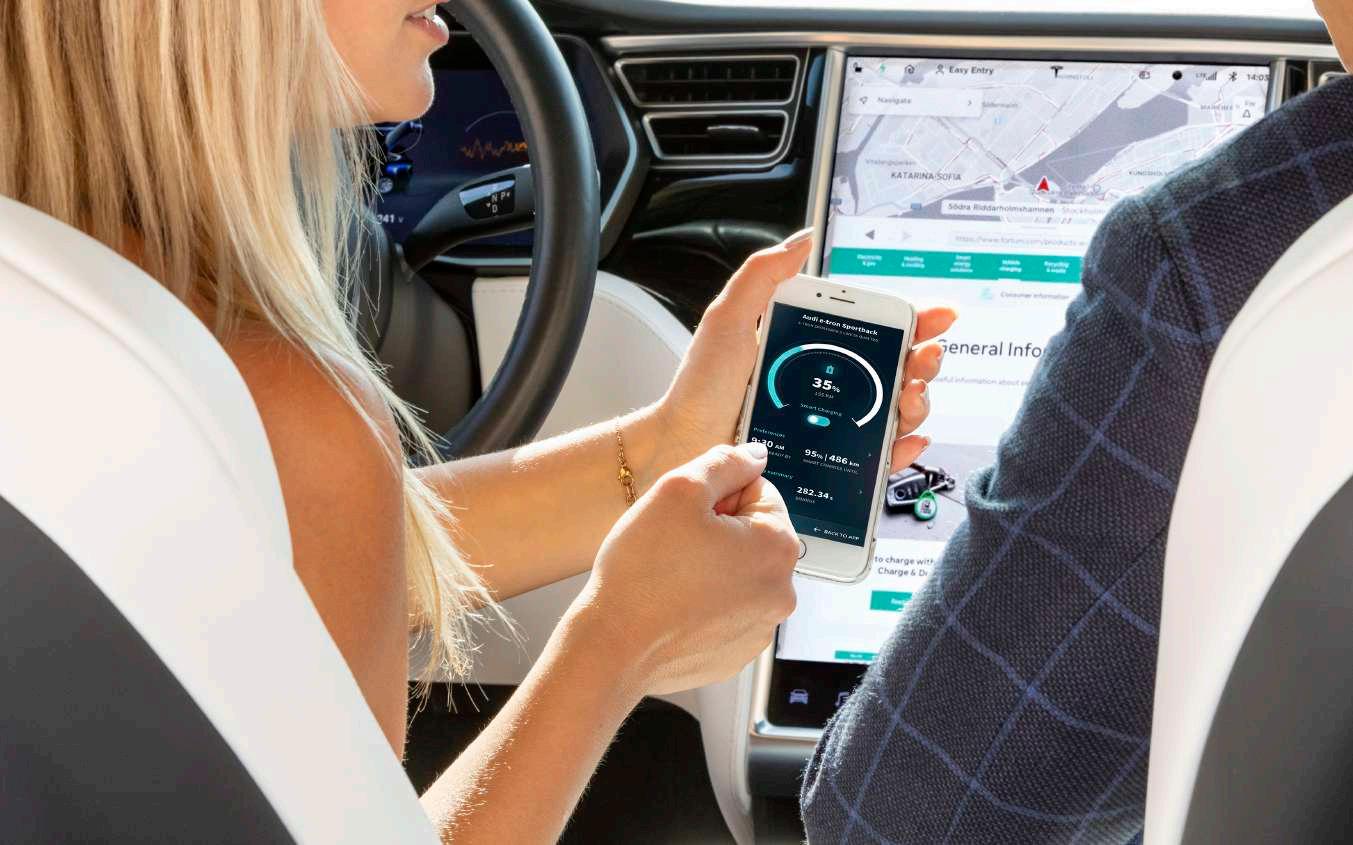
For those who worry what the future might hold, Jani paints a reassuring picture of a smart, connected energy system that looks much the same – but doesn’t cost the Earth.
Find out more n Discover how Hiven is helping to create a greener, cheaper energy system at hiven.energy
ENERGY mygreenpod.com COP27 41
FOLLOWING
friends and family later, I founded a brand-new production company, Bee Solar Technology Ltd, to manufacture Heliomotion solar tracking systems and sell them globally with associated products.
This happened at a time of global supply and logistics disruption, but we remained optimistic and found a local and very responsive family-run steel company, which managed to turn the prototype round very quickly.
We negotiated with several aluminium companies and found two that were able to supply us at a time of aluminium shortage. We found a local fastening supplier who swung into action to help us source multiple nuts, bolts and washers, and our developer in Finland pulled out all the stops to supply control boards and sensors to meet our deadlines.
After sourcing 3D printing, stepping motors, transformers and various other components, I am proud to say that we delivered our first Britishassembled systems in just under three months –a fantastic team achievement from a standing start.
HOW SOLAR TRACKING WORKS
The design and technology behind solar tracking is both highly complex and beautifully simple.
The systems are heliotropic, just like sunflowers; they turn and tilt slowly from sunrise to sunset so the panels are always facing the sun at the optimal angle. This means that they generate a great deal more electricity than static systems; in the UK it’s around 40-45% more. As a result, six panels on a tracker have the same approximate generating capacity as 10 solar panels on a roof.
Our systems are dual axis, which means as well as turning 180 degrees horizontally over the course of the day, the vertical angle of the panels alters up and down according to the position of the sun.
They are controlled by GPS and a position sensor, so whatever the light level, they know which way they should be facing to optimise potential power generation. When the sun dips 6º below the horizon, they start to swing back, ready for sunrise the next day.
Idiscovered Heliomotion solar tracking technology by complete fluke in early 2018, when I was skimming through a Scandinavian in-flight magazine. At the time I was looking for a solar solution for my own home; my roof features gables and Velux windows and has no south-facing pitch, meaning static solar PV wasn’t an option.
In contrast, Heliomotion solar panels are fixed to a column in the ground, and move to track the sun. As well as providing a great solution to architectural challenges, the panels deliver 30-60% more energy than roof-based panels of similar dimensions.
I had never come across Heliomotion before; the system immediately seemed like a genius idea and I wanted to buy it, but quickly discovered the technology wasn’t available in the UK. I contacted the company headquarters in Finland and the rest is history; I joined the team and started my solar tracking career managing Heliomotion’s marketing and global business development.
MAKE OR BREAK
The system won Build It magazine’s Best Home Technology award at the end of 2018, but this great start was quickly overshadowed by Brexit, a twoyear Covid pandemic and the termination of the government’s solar subsidy – all of which slammed the brakes on our growth potential in the domestic solar market.
I soldiered on and won the 2020 P.E.A. Award for Energy in recognition for the work I had done to bring the technology to the UK and several other countries. Things were on the up – and early 2022 heralded a new beginning. Mask-wearing rules were dropped and the market began to pick up as normal sales activity resumed.
However in May 2022, our manufacturer in Sweden ceased production at very short notice –while I had orders placed. I had to make a huge decision: should I quit or go for it? A few short weeks of thought, planning and discussions with
Unlike rooftop installations, which have rails and panels that require a team of people and scaffolding, our DIY systems have been designed specifically to be installed by a single person with a willing assistant. No lifting equipment is required as the pieces weigh no more than 30kgs, and most are considerably lighter. They can be mounted quickly using ground anchors, which we supply with a custom base plate, using a power hammer available from hire shops. The alternative option is a cubic metre concrete plinth, though this is a far less eco solution that requires a lot of digging and a concrete mixer.
All this means that our systems can be deployed rapidly to restore power in a disaster zone, whether an area has been hit by flooding, hurricanes or war. We have started actively engaging with companies and charities who are first on the scene in these situations.
The systems are available in three different sizes – with three, four or six panels – and two colour options: silver or green, to blend in with garden
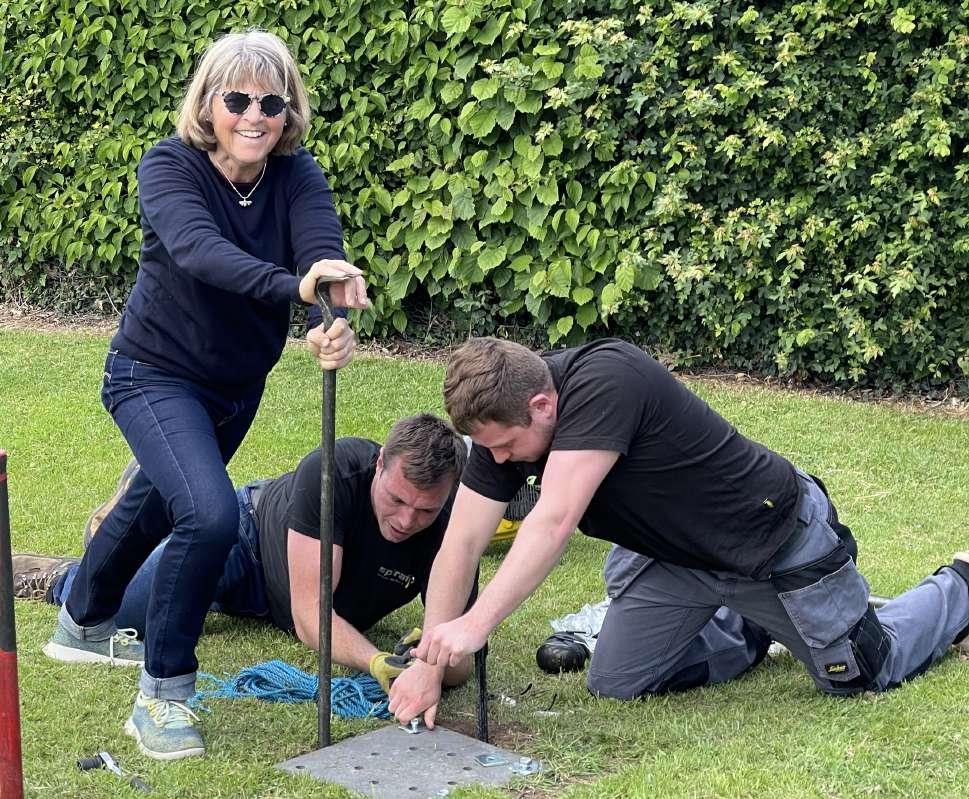
42 COP27 mygreenpod.com
Bee Solar Technology’s Melissa Briggs on the hassle-free way to harness solar – and its savings
THE SUN
foliage. The largest system requires a turning circle of around five metres in diameter.
The systems can be used at homes or businesses, as a single unit or in larger numbers to operate as a microgrid. Six Heliomotion PV-6s are currently being installed in Norfolk at the Water Management Alliance’s new HQ, which has been designed to be as sustainable as possible. Another five are about to be installed at a single property in Monmouth, where the words ‘light switch’ and ‘off’ largely fall on deaf ears!
The systems are engineered to withstand winds of up to 80mph, but can be parked horizontally if more serious storms are expected. An extra bonus is that if you move house, you can take your system with you. Try doing that with a rooftop system!
ENERGY AND COST SAVINGS
You can lower your household energy bills substantially by using Heliomotion to trickle charge your electric vehicle (EV) or fast charge if you have battery storage.
Cost savings – especially as we face a global energy crisis – are a major driver in decisionmaking. Everyone wants to understand the impact the technology could make on their bills now that prices have rocketed, and of course that will depend on various factors that affect energy consumption.
I undertake site surveys, both in person and remotely by video call, to advise people on optimum siting and how to space multiple systems to avoid shading issues. I discuss whether power-hungry equipment will run when the sun is out and whether the solar equipment will generate power during the times it’s needed most.
I normally say to people that a PV-6 can enable substantial savings for a three- to four-bedroom property if the occupants plan their usage according to the power being generated, save their surplus generation and don’t expect to walk around in T-shirts in the depths of winter while keeping their house at 23º! Teenagers using their computers all night may generate big bills if no mitigation is in place – and jumpers, gilets and fleeces are some of the best equipment for mitigating the effects of a harsh winter.
SOLAR AND RED TAPE
Heliomotion systems are now busy generating power all round Europe, Scandinavia and the UK, and are springing up in the USA. They have caught the attention of various newspapers including the Times and the Guardian, as well as climate organisations and renewable energy experts.
There are still some major barriers to entry to the solar PV market; no effective subsidies have been in place since the Feed-in Tariff (FiT) was closed and replaced with the Smart Export Guarantee (SEG) tariff, which pays a fraction of the previous rate. Legislation states the SEG only has to be more than
CLOCKWISE Melissa demonstrates how Heliomotion has been designed for DIY installation; the solar tracking technology follows the sun for maximum efficiency
0p (yes, you read that right). The 0% VAT rate only applies if you buy your equipment from an installer who also does the work, meaning anyone carrying out a DIY project pays the full 20%.
Solar PV installations larger than 4kW also require DNO (Distribution Network Operator) approval; this leads to bottlenecks as only qualified electricians are supposed to apply.
I have tried, totally unsuccessfully, to engage with five successive government ministers and BEIS leaders, with the help of my local MP, Siobhan Baillie. They move post so quickly it is impossible to have an ongoing dialogue that is in any way meaningful. It is frustrating because by failing to harness the full potential of solar we are missing a huge opportunity.
New-builds should be required to have 3-4kW of solar PV (not just two panels to tick a box), rainwater harvesting and EV charge points, and all new industrial building roofs should be covered in solar. Rules regarding the adoption of solar for
those with listed properties, in conservation areas and AONBs need to be overhauled if we are to substantially increase numbers of renewable energy users. The current percentage of homes with renewable energy is a mere 5% of the total, at around 1.4 million out of 28.3 million homes.
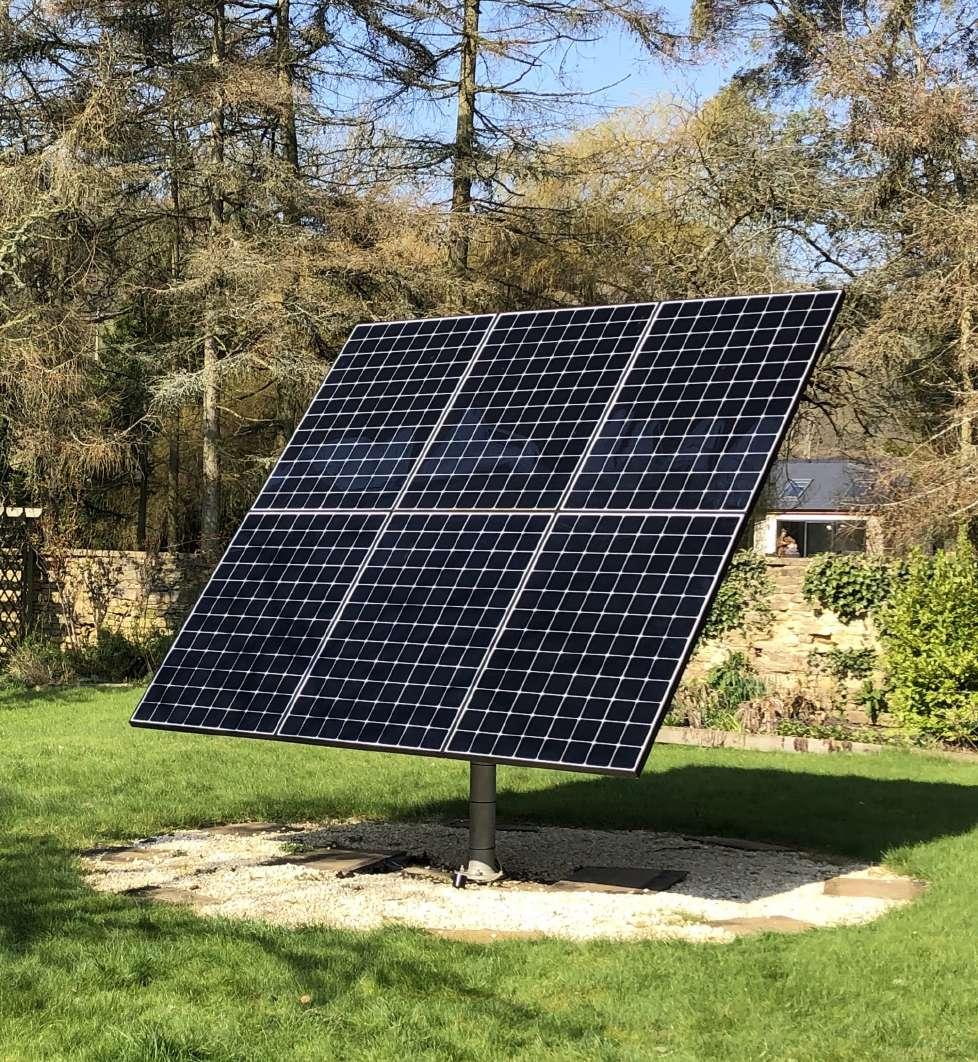
Now that panels are becoming more powerful and disasters caused by climate change are worsening, these restrictions need to be lifted to allow more households to generate as much power as they need. Grid infrastructure needs to be able to meet the public’s desire to make their homes sustainable – not make it more difficult. Heliomotion systems are bringing homeowners one step closer to that off-grid, energy-secure dream.
Find out why Bee Solar Technology’s Heliomotion is a My Green Pod Hero at mygreenpod.com/heroes
Find out more n Discover how a Heliomotion system could work for you at beesolartech.co.uk
ENERGY
mygreenpod.com COP27 43
Energy security

44 COP27 mygreenpod.com
Mark Millar, CEO of Puredrive Energy, on how an integrated home battery system and EV charger can slash energy costs
Discover why the Puredrive PureStorage II AC Battery is a My Green Pod Hero at mygreenpod.com
This November we will launch our latest Puredrive product: an electric vehicle (EV) charger that offers a seamlessness of integration not yet seen on the market. Our goal with the charger is to address an important market issue: the way EV charging can drain precious green or lowcost energy.
We noticed a significant number of our customers were complaining that their EV was using energy from their home battery system that would be better used in their home. For example, their car charger was using power in the evening when energy prices are often higher.
We recognised that integrating these systems is critical if we are to maximise homeowners’ energy savings and protect customers from spiralling energy costs.
USING CHEAPER ENERGY
The ideal scenario is for both the car and the home battery to be charging when the lower cost tariffs come into play, such as between 00:30 and 04:30.
If the two systems are not integrated, the battery is likely to discharge. This means that cheaper energy from the battery would not be available for the homeowner to use when the cost of energy is expensive – usually first thing in the morning and 16.00-19.00.
The Puredrive app integrates the home battery system and the EV charger to enable the automatic operation of variable rate tariffs. Puredrive is agnostic to energy suppliers and can therefore integrate with any tariff on the market. The app

CLOCKWISE
The Puredrive EV charger is integrated in a way that’s designed to save both power and money; the home battery and EV charger can be linked to any tariff – from any energy supplier on the market – via the Puredrive app; a partnership with Amazon’s Alexa offers an additional way to control the tech; the Puredrive EV charger and home battery system are seamlessly linked so power is available in the right place at the right time

automatically determines the cheapest periods to charge the car and home battery system, based on the weather, season and the homeowner’s energy consumption.

OPTIMISED FOR THE WEATHER
During the winter, the days are shorter and darker; there is less sunshine and less available energy. A homeowner with energy stored in a battery system would prioritise powering the home over charging the EV. The app’s software would recognise this and charge the EV from the grid, during cheaper periods of a variable rate tariff.
In the summer months, long sunny days lead to an abundance of energy way beyond the requirements of the home. Again, the software would recognise this change and use the battery’s stored energy to charge the EV, knowing that there is sufficient headroom to cover the needs of the home.
Day to day, the software will consider the weather and optimise a balance between energy used from the battery and variable rate tariffs.
Ultimately, this seamless integration ensures minimal energy is taken from the grid and the energy that is purchased comes at the cheapest price – saving the homeowner cash, reducing their carbon footprint and protecting the grid by using energy at off-peak times.
A SMART ECOSYSTEM

Our quest for alternative ways to improve accessibility between the homeowner and their devices has also led to a partnership with Amazon’s Alexa, and users are now able to control their system using Alexa as well as the Puredrive app. On command, you can expect Alexa to welcome you with an update of the current status of a system.
Power Cut mode has also been introduced to ensure energy security in the case of a blackout. If a power cut is expected, setting Power Cut mode using Alexa (or the app) will force a charge to 100% for a 24-hour period. After that the battery will automatically resume to its standard settings.
At Puredrive we believe the seamless integration between smart energy products represents the future of home energy consumption. Our goal is to create an ecosystem of smart products that work together, exactly how you want them –not unlike the approach taken by Apple.
Find out more
Information about Puredrive’s storage solutions is at puredrive-energy.co.uk
TRANSPORT mygreenpod.com COP27 45
When David Cameron – remember him?
– denigrated renewable energy and energy efficiency by calling it ‘green crap’ in 2013, I feared the worst.
At the time I was running The Renewables Roadshow, a series of events designed to take cleaner tech on a nationwide tour of the UK. Meanwhile, on a parallel track, my friend Robert Llewellyn, founder of the Fully Charged Show, was educating consumers about electric cars.
In the US Tesla was 10 years into its electric journey and winning awards with the Model S. Germany’s energiewende was still in its nascency and China was entering the 12th five-year plan of its long-term energy policy, as it sensed the biggest transfer of wealth in modern history.
In 2015, the ‘Dieselgate’ scandal broke –an egregious breach of trust in which German carmakers (principally, but not only, VW) were caught cheating emissions tests. The following year Tesla announced its intention to bring the Model 3 to market, and despite the scorn poured on the company then, now it strikes fear into the heart of the legacy car industry.
And what of Greta Thunberg? Well, she was waiting in the wings if you like, and started her School Strike for Climate in 2018 at the tender age of 15.
POLITICS AND GREEN ENERGY
I could quote hundreds of examples of leadership coming from unexpected sources, and yet relatively little has changed within ‘the establishment’. In fact, and I can scarcely believe this, the UK’s establishment was, at the time of writing – and (very much) against ‘the will of the people’ – about to start licensing fracking.
Would this lower energy bills, the purported reason for these licenses? No. Note that Jacob Rees-Mogg was at the time Secretary of State for Business, Energy & Industrial Strategy.
Is there a genuine prospect that fracking will get the green light? Almost certainly not. But it’s just another cynical, insidious way to delay the progress of more democratic technologies like wind and solar.
Our government’s proposal to cap energy bills and make us – the taxpayer – pay for it over the long term, rather than taking a windfall tax from those that are profiting, beggars belief.
The truth, though, is that the move towards battery electric vehicles (BEVs), energy storage, solar, wind and other forms of renewable energy are megatrends. Despite all best efforts, these megatrends are unstoppable.

ELECTRIFICATION IS INEVITABLE
Megatrends dwarf politics. Politicians (and their backers) would have been powerless to prevent the rise of smartphones, tablets and laptops, and they are powerless again.
Whatever the crisis – wildfires in Canada, droughts in Europe, flooding in Pakistan, conflict in Ukraine – all roads lead to renewables. Every event hastens the inevitable rise of electrification.
UNEXPECTED LEADERS
Fully Charged’s Dan Caesar explains why a lack of political leadership shouldn’t be the end of the world
This is the beginning of the death rattle for fossil fuels. Mark my words, the volatility of the cost of filling your tank with petrol, or heating your home using gas, is only going to get worse. Much worse.
So let’s get off these pernicious poisons. It doesn’t need to start with electric cars and heat pumps, it can start with insulation, turning down the thermostat and reducing the flow temperature of your boiler. And as an added benefit, your actions can choke off the dinosaurs, disaster capitalists and deregulators of this world.
#STOPBURNINGSTUFF
Leadership comes in many different forms –we see it every day. We see it from the countless
Find out more
companies we work and deal with, in the people we meet and often in the most unexpected places.
For our part at the Fully Charged Show, we remain bloody-mindedly focused on our singular objective: to inspire people to #StopBurningStuff. Make no mistake: the combustion era is coming to a close. The air we breathe will be cleaner, we will be able to slow the climate crisis and our lives will be better, too.
So whatever you do, do something. Even if it’s just tuning in to the Fully Charged Show (see ‘Find out more’, below) on YouTube every Tuesday and Thursday. We all have to start somewhere – and behind every action is an unexpected leader.
n The Fully Charged Show has a global audience on YouTube and in 2023 will also have a second channel dedicated to Home Energy, six live events around the world and an international awards event. Discover more at fullycharged.show
TRANSPORT
PHOTOGRAPHY ISTOCK 46 COP27 mygreenpod.com
COMPETITIONS
We’ve got our hands on some very special prizes from fantastic companies that are doing things differently. We love them and we want to give you a chance to get to know them, too – so we’re running these competitions so you can see for yourself!
We’ve hand-picked this selection of green pearls – including a year’s supply of cleaning products and self-charging headphones powered by green tech – to help set you on a path to a lighter lifestyle.
To enter and view any Ts & Cs, visit mygreenpod.com
WIN COLDSTREAM MAX UNDERCOUNTER DRINKING WATER SYSTEM

WIN
A YEAR’S SUPPLY OF FILL REFILL HOME ESSENTIALS
We’re giving away a 12-month supply of Fill Refill Wash Up, Hand Soap and Laundry Liquid, plus a refillable screen-printed 500ml glass bottle for each one.
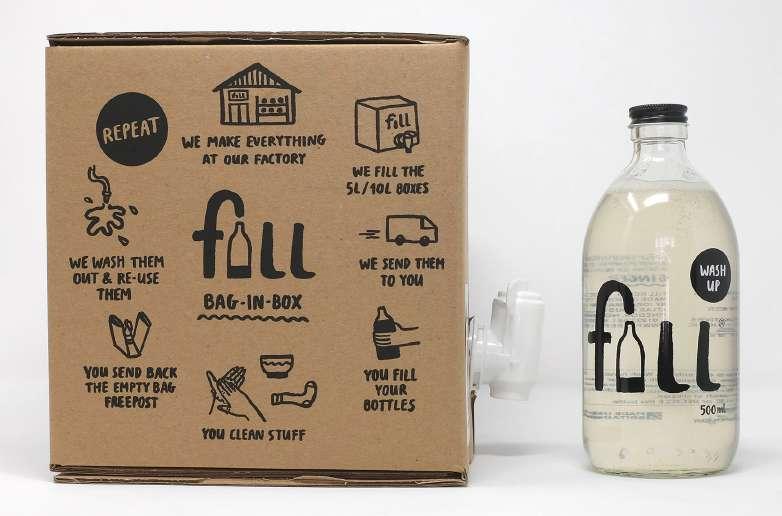
Deadline for entries: 17.02.23
WIN
URBANISTA
LOS ANGELES

SELF-CHARGING HEADPHONES
Courtesy of Hiven Energy, five lucky readers will receive a pair of the world’s first self-charging headphones! The clever green tech inside these wireless headphones from Urbanista is driven by solar energy.
Deadline for entries: 31.12.22
Wave goodbye to bottled water and save money as well as the environment! One reader will receive a stainless steel Coldstream Max Undercounter water filter system, along with a filter and up to £150 towards installation costs.
Deadline for entries: 17.02.23
WIN
A £100 VOUCHER TO SPEND ON THE MY GREEN POD MARKETPLACE

Whether you want to save cash through reusable products or experience the sheer joy of authentically organic luxury, we’ve got you covered. One reader will get £100 to spend at mygreenpod.com.
Deadline for entries: 17.02.23
mygreenpod.com COP27 47

















































































































































































You wouldn’t get a Christmas pudding from a florist… ...so only lease an electric car from the experts. Find out what we have to offer at gridserve.com/leasing Plus you’ll get 3 months free charging on the GRIDSERVE Electric Highway included. TEST. LEASE. CHARGE.















































































































































































































































































































